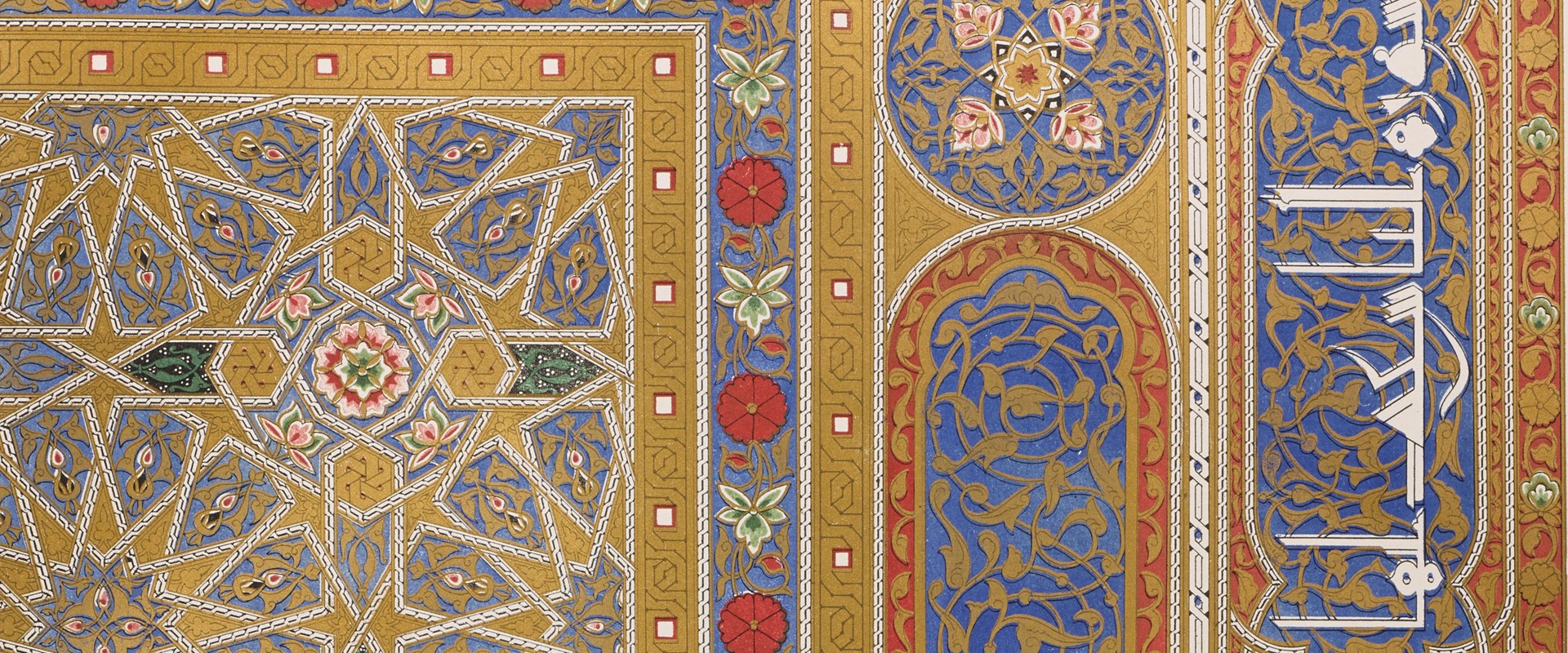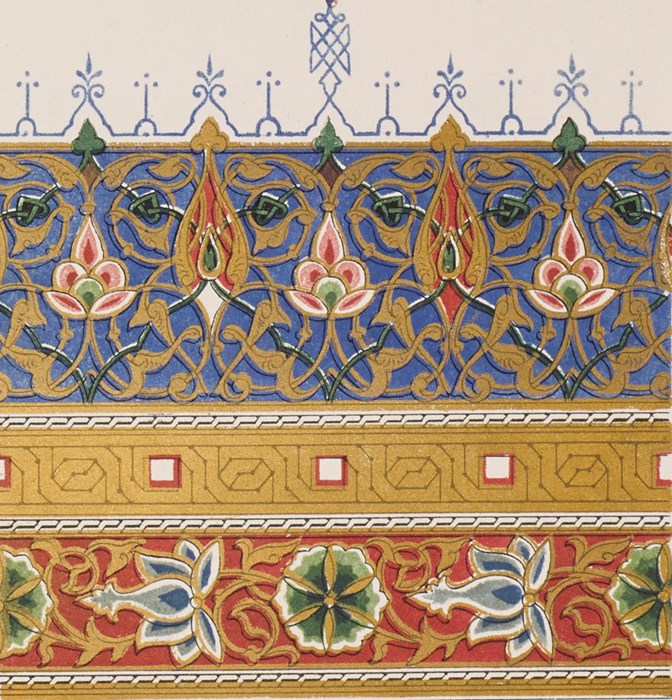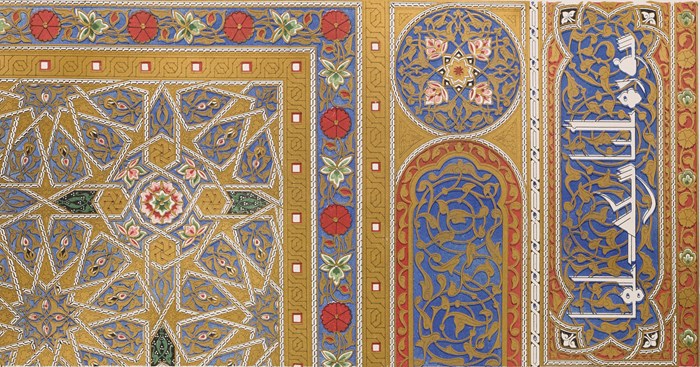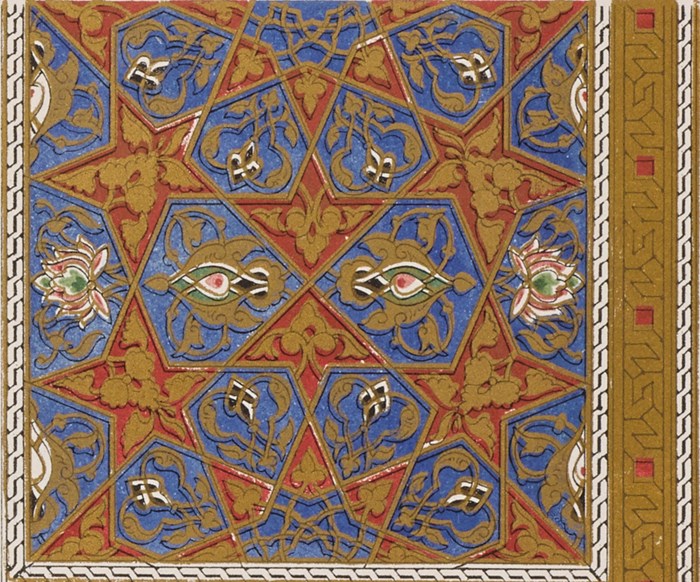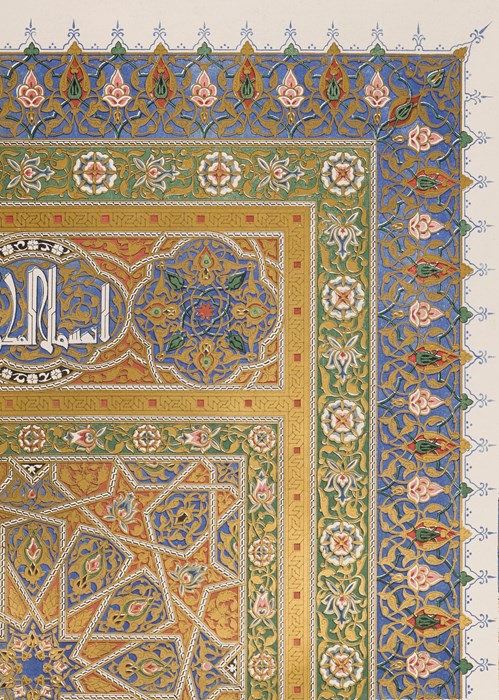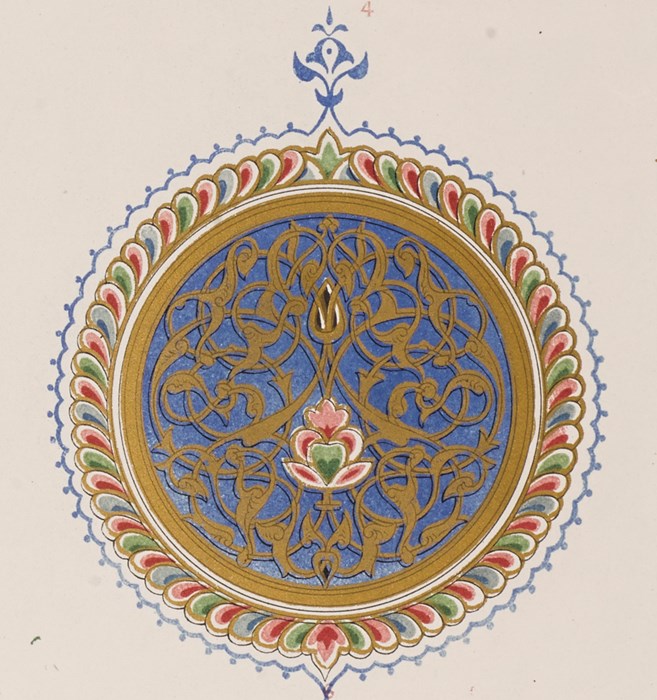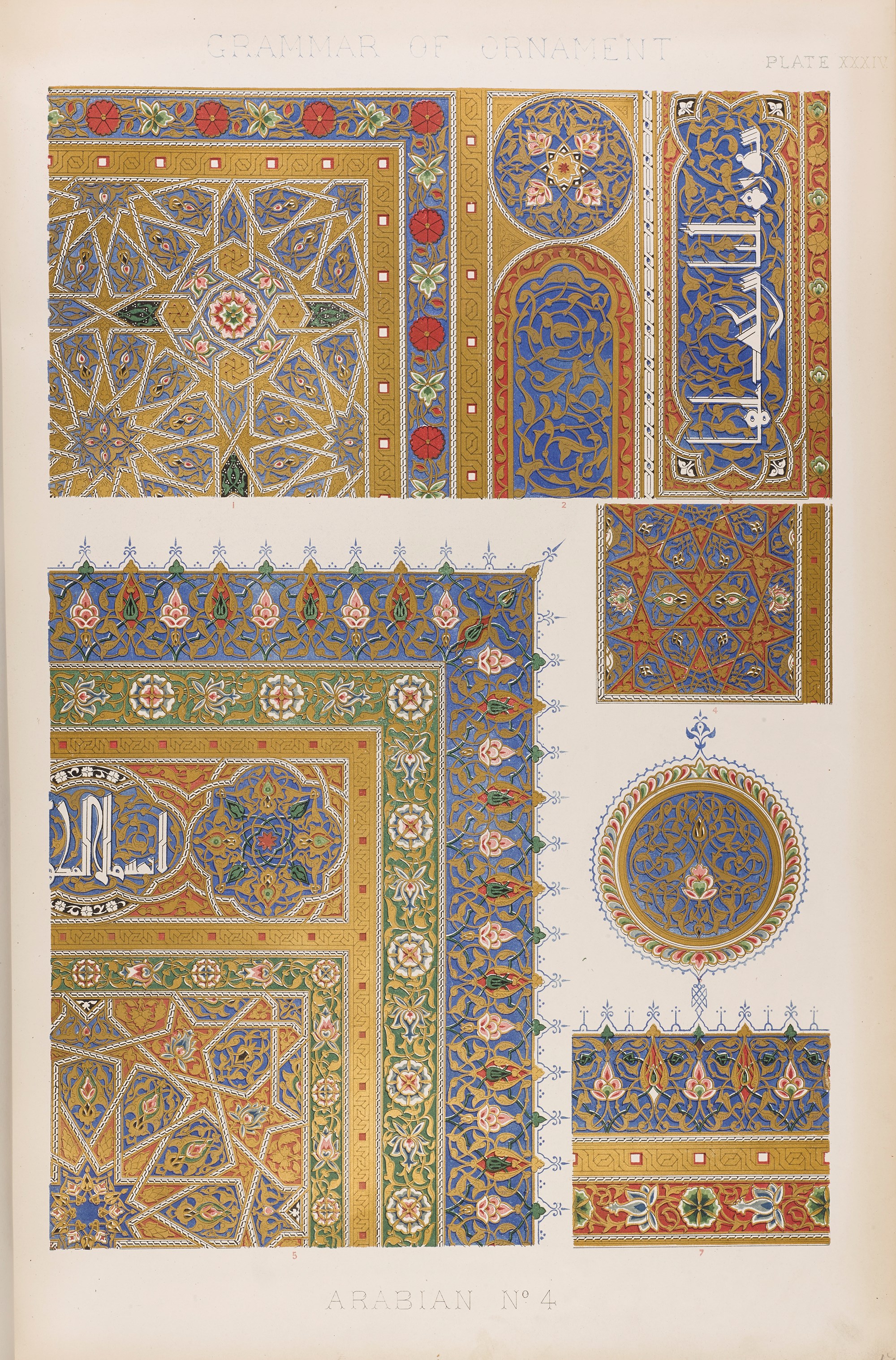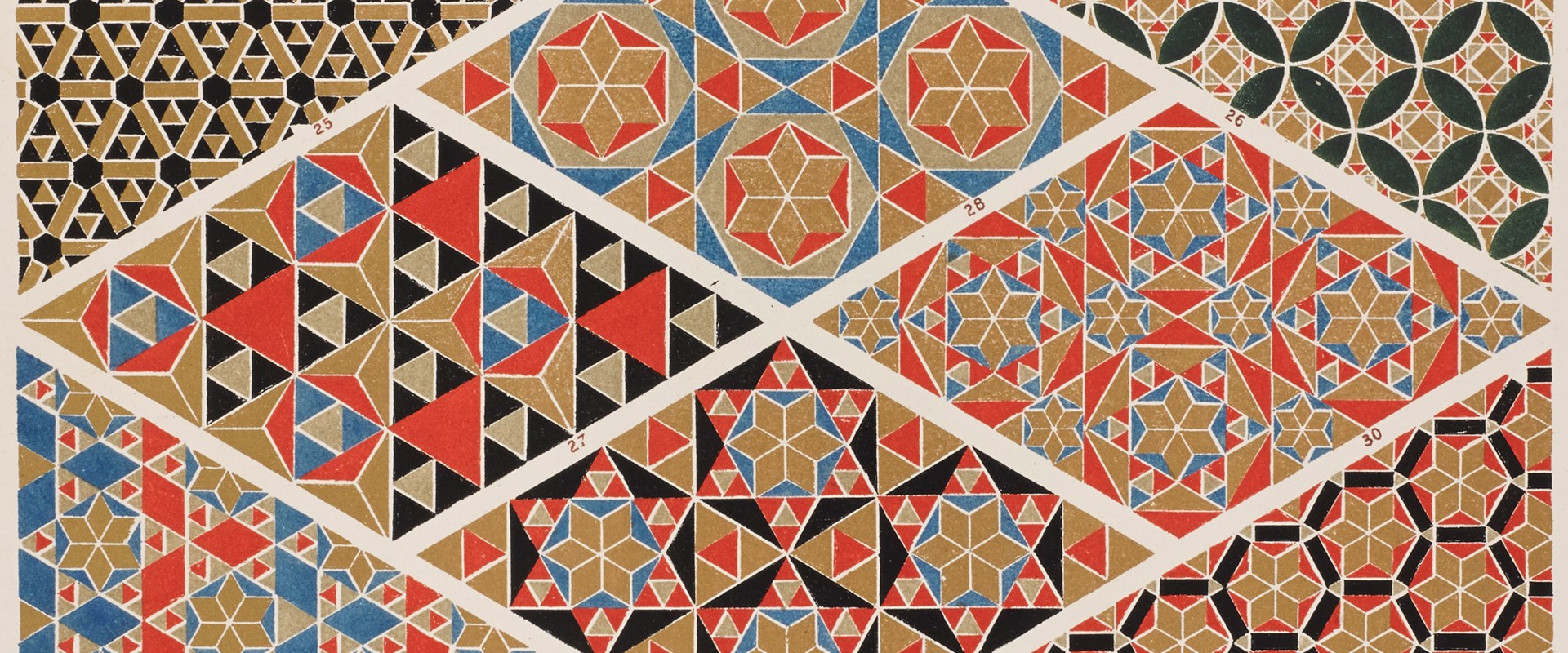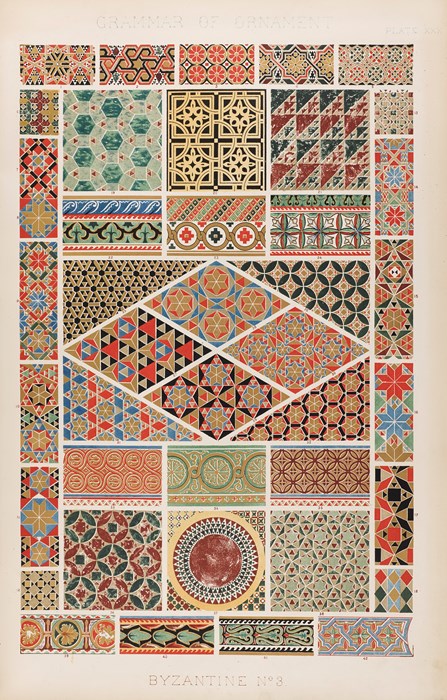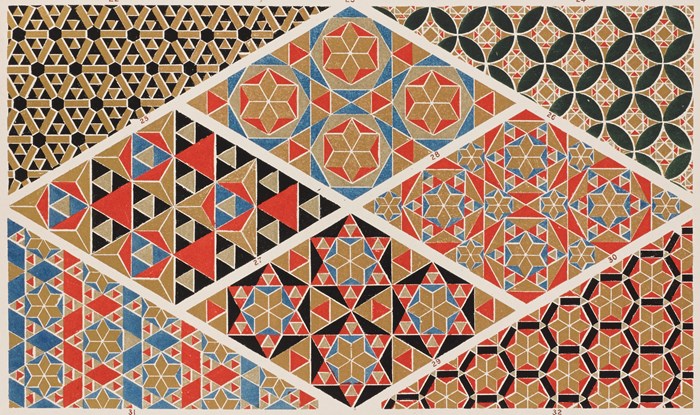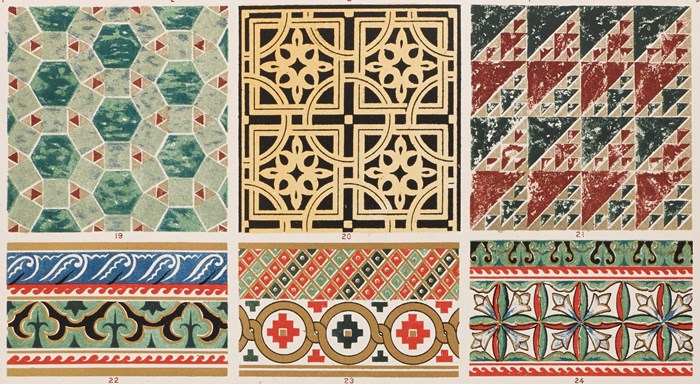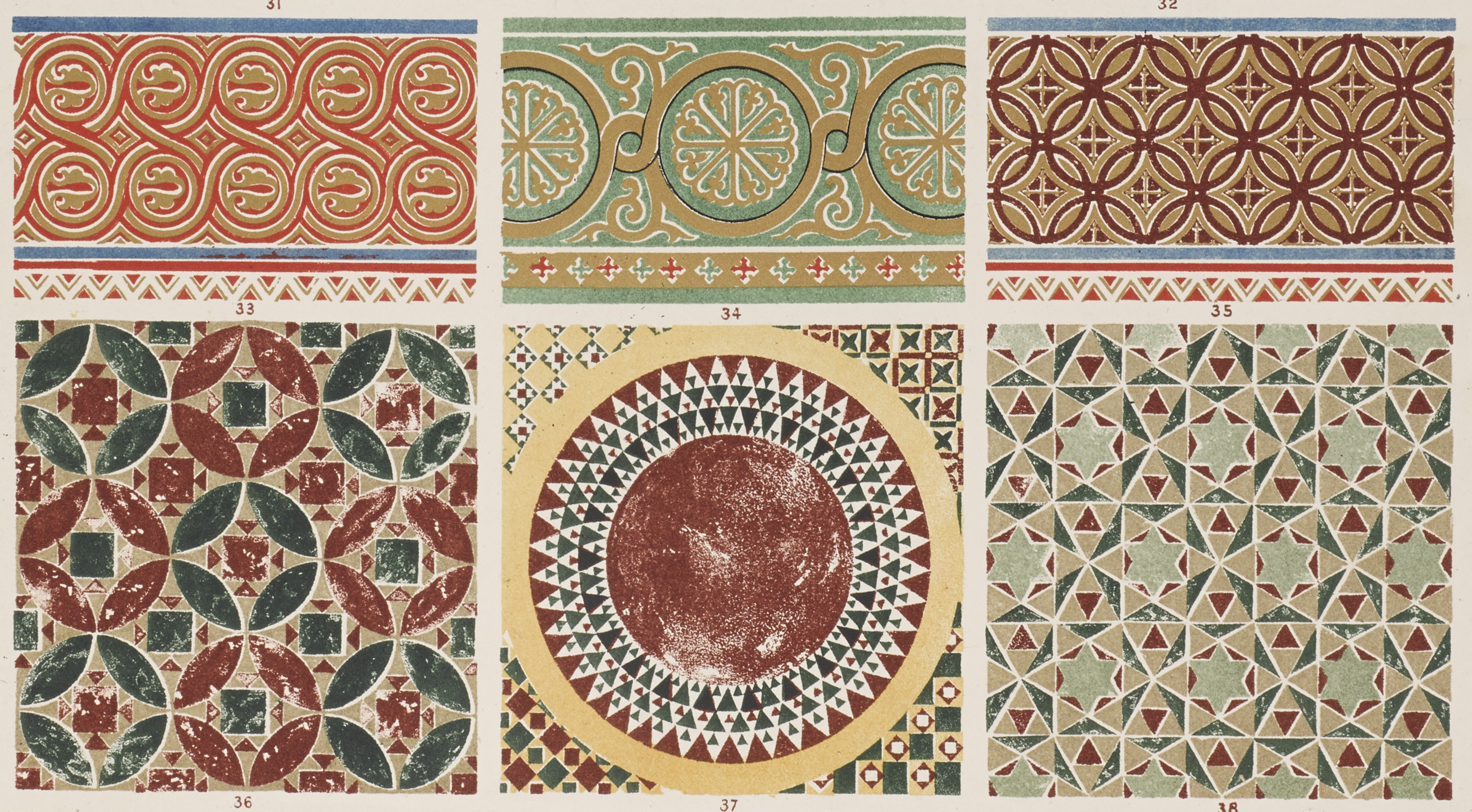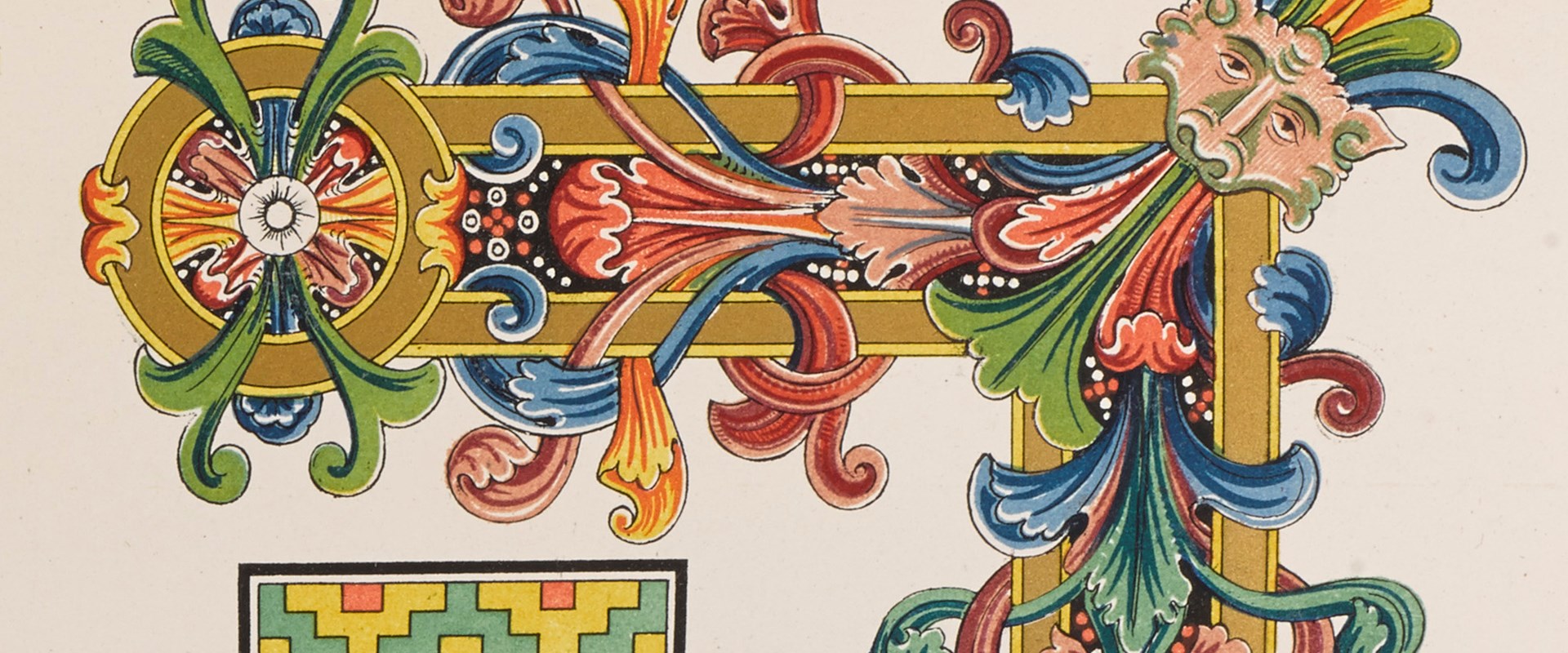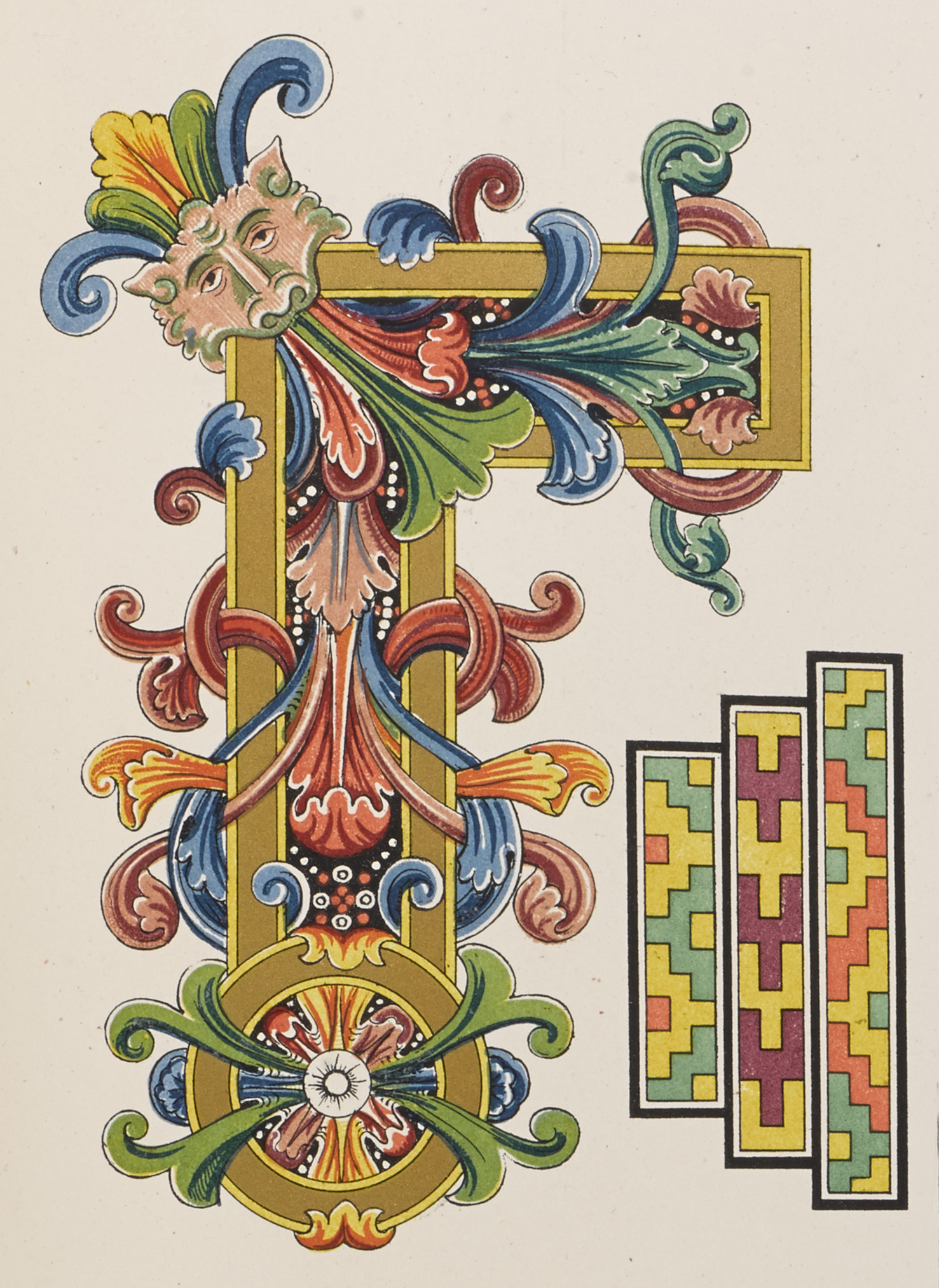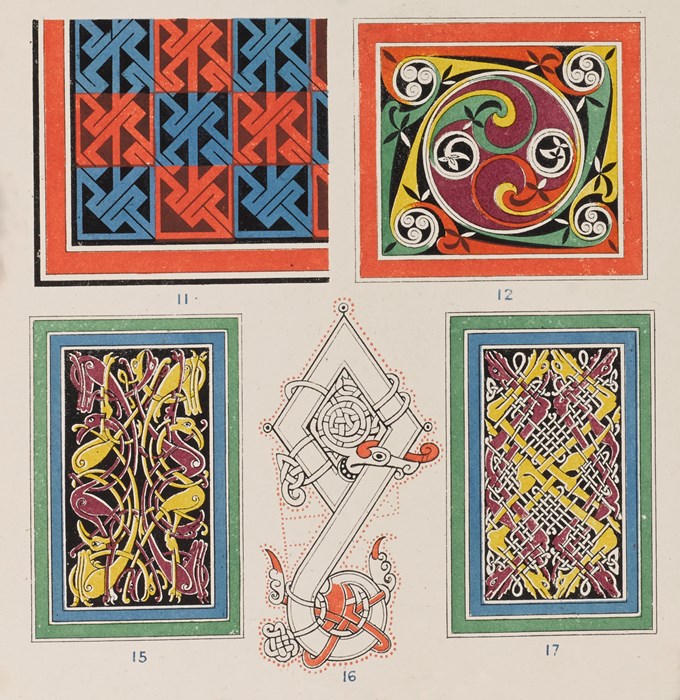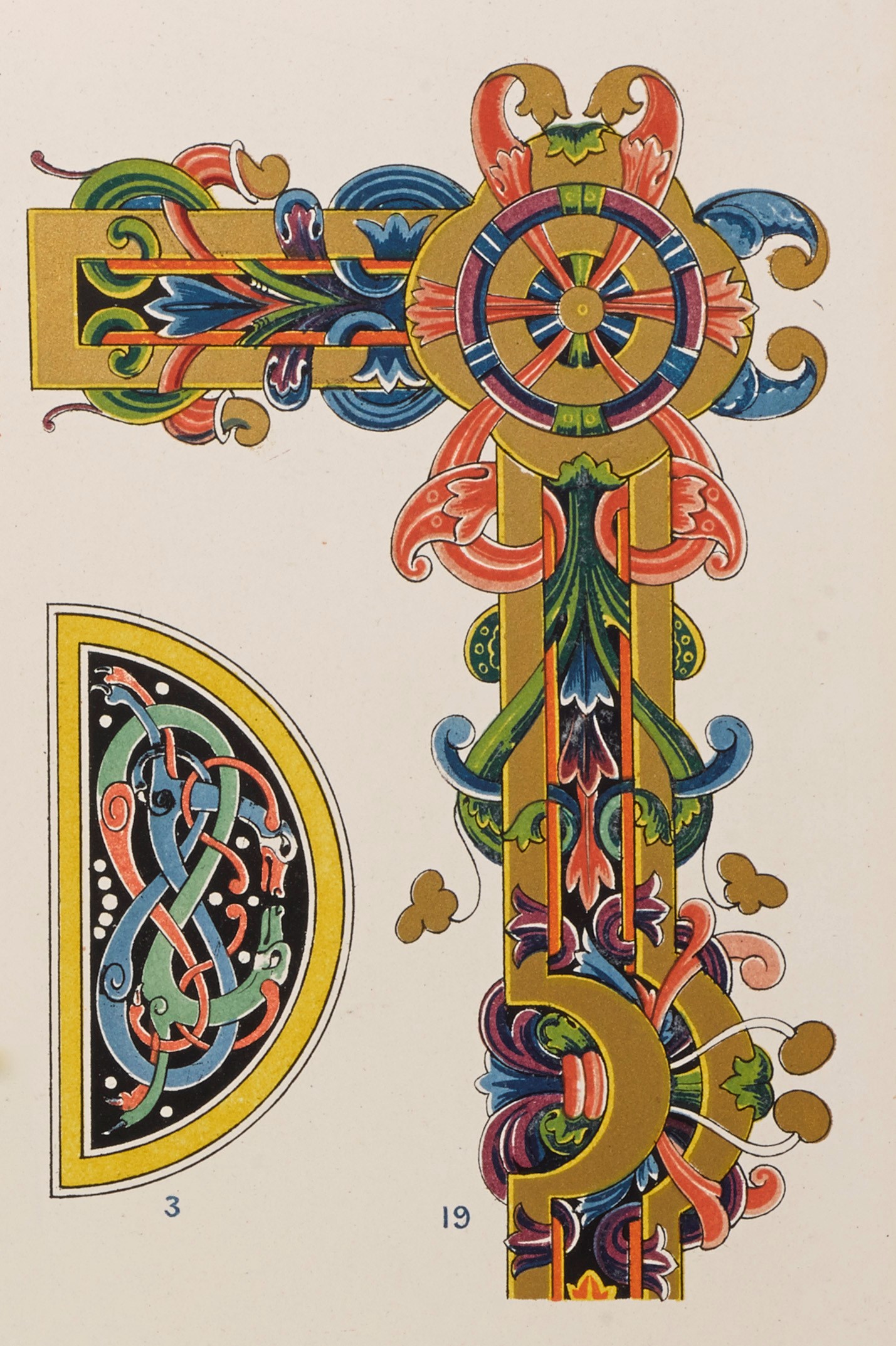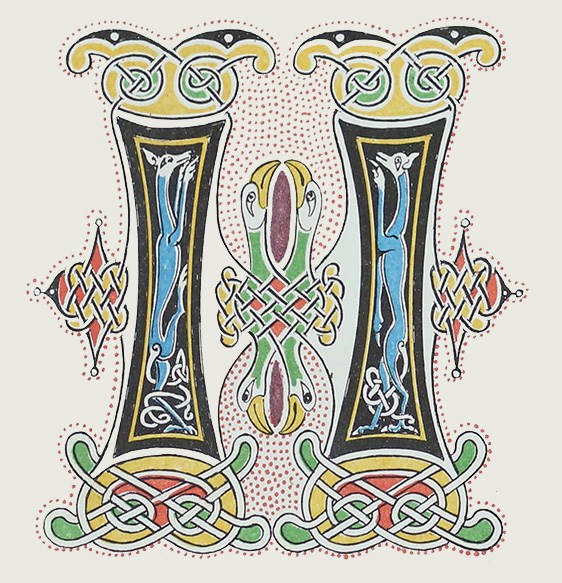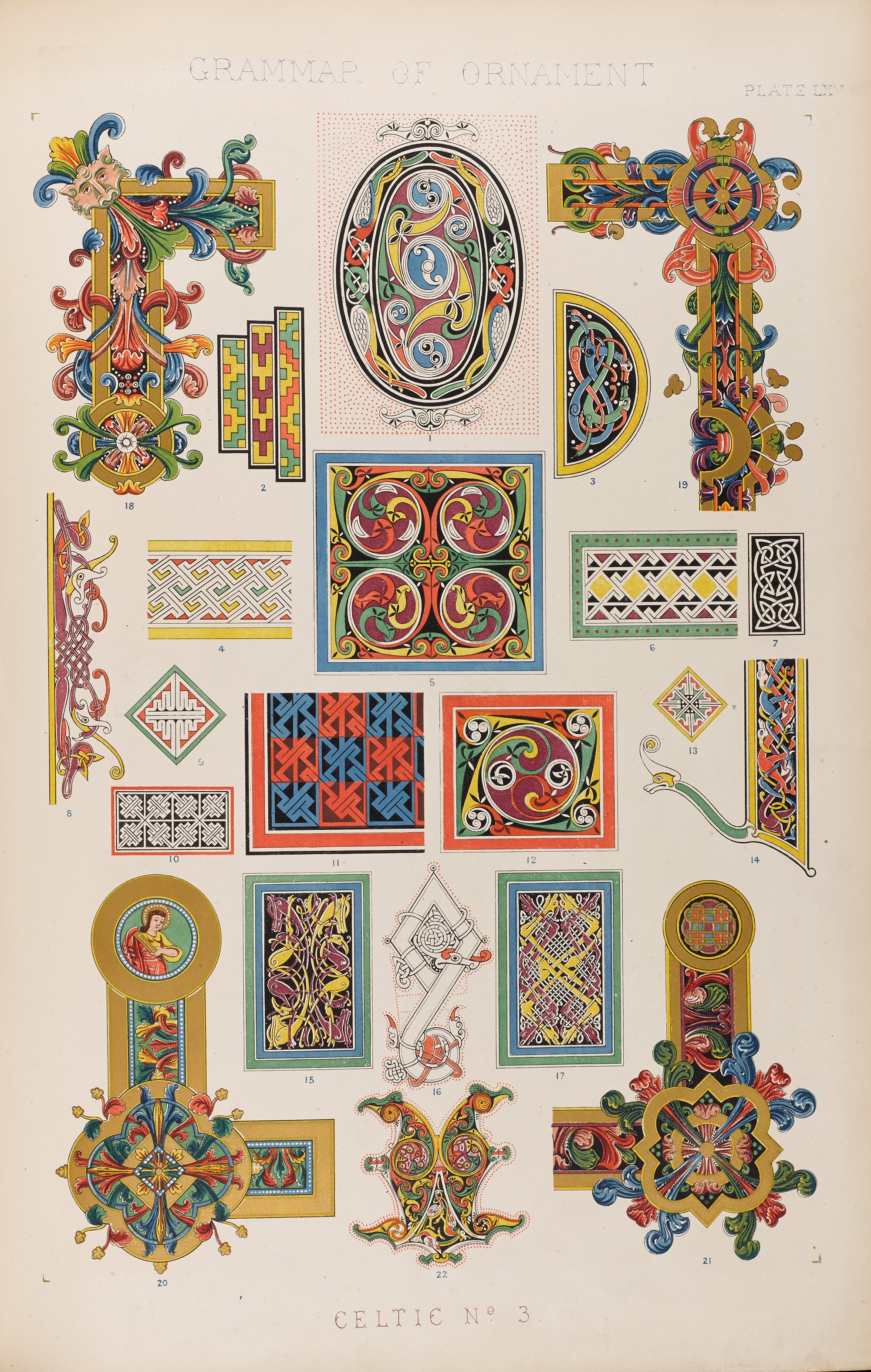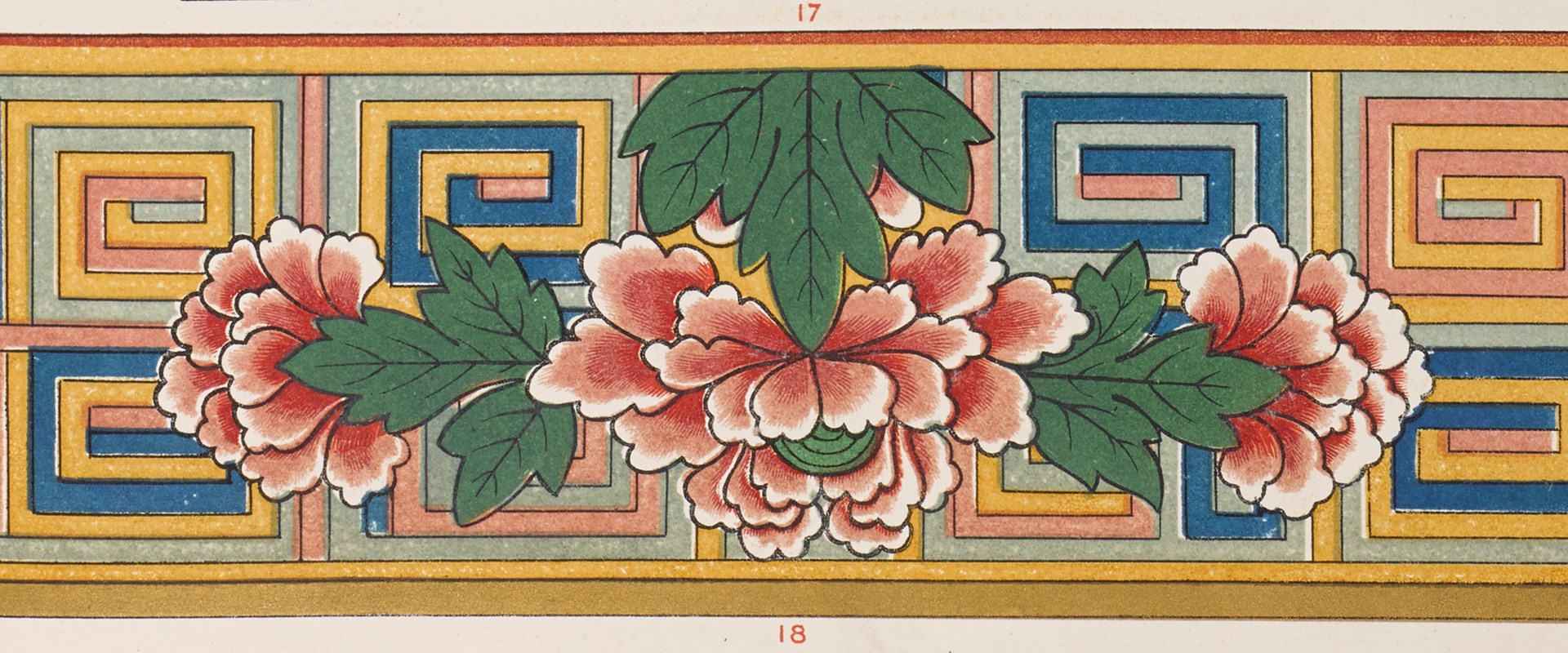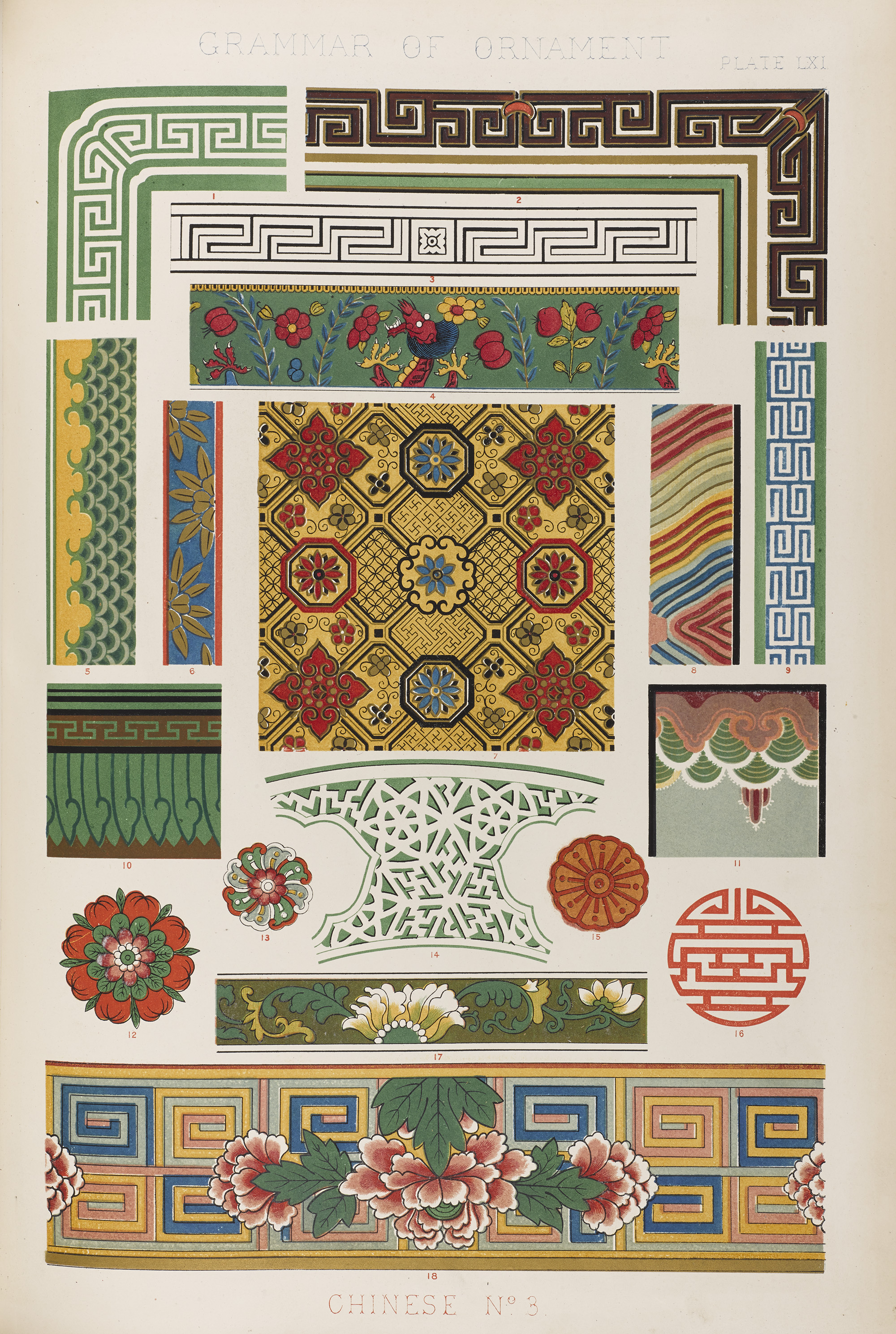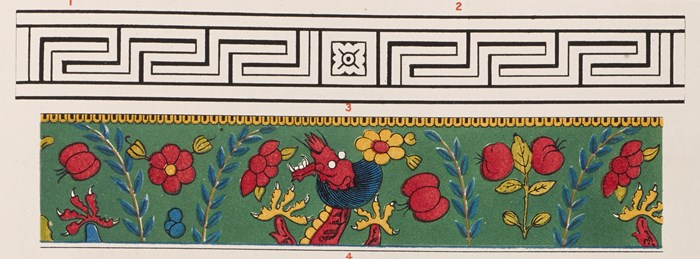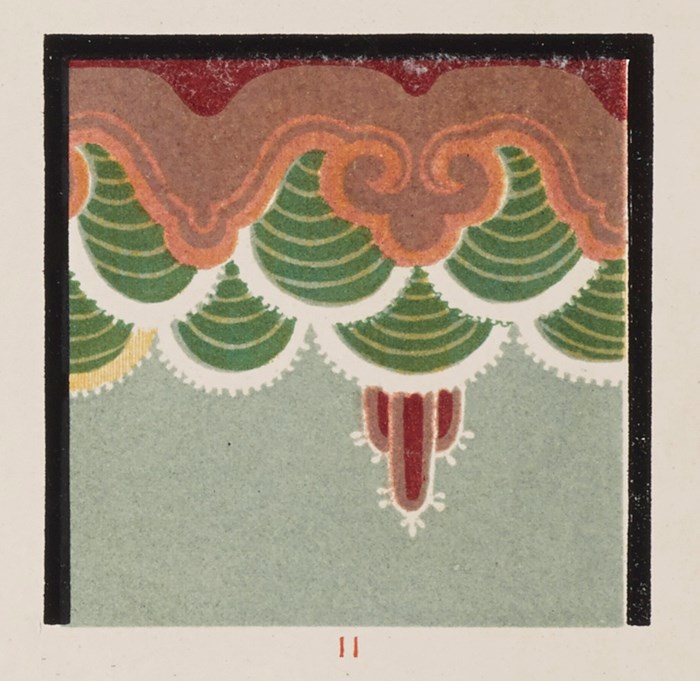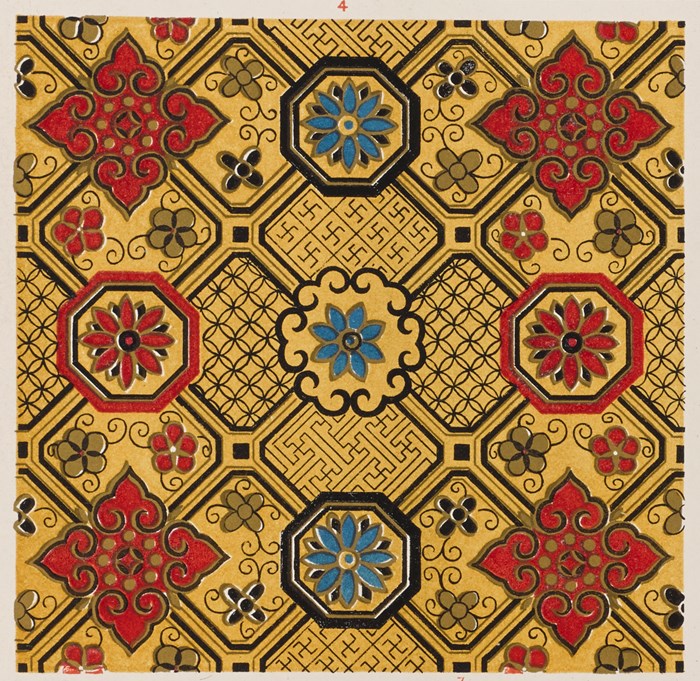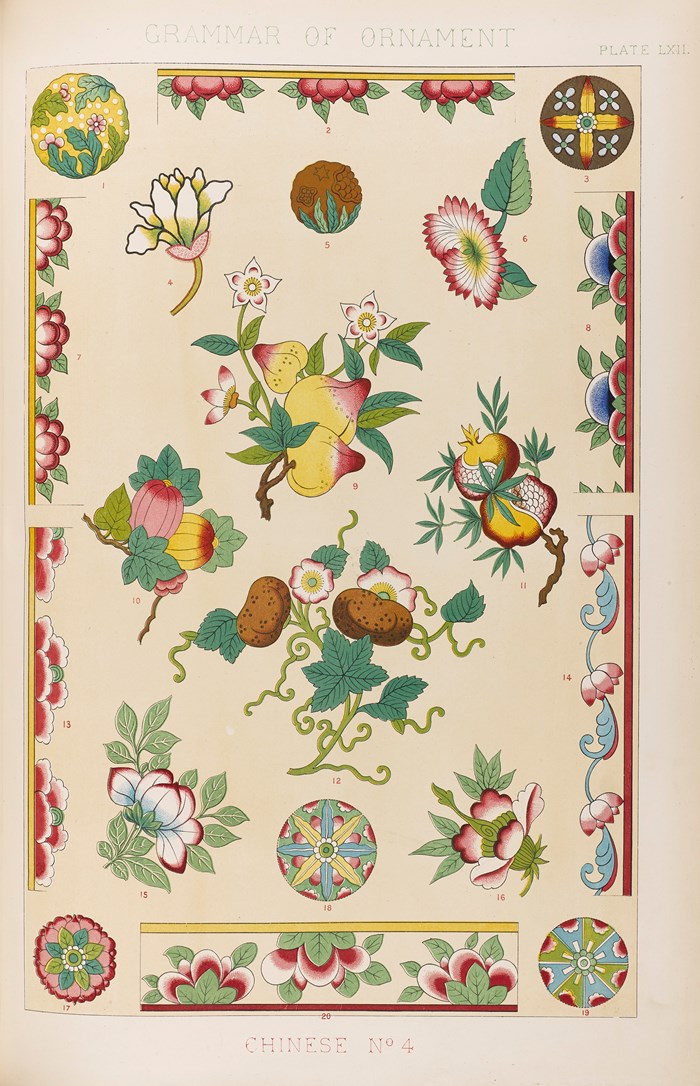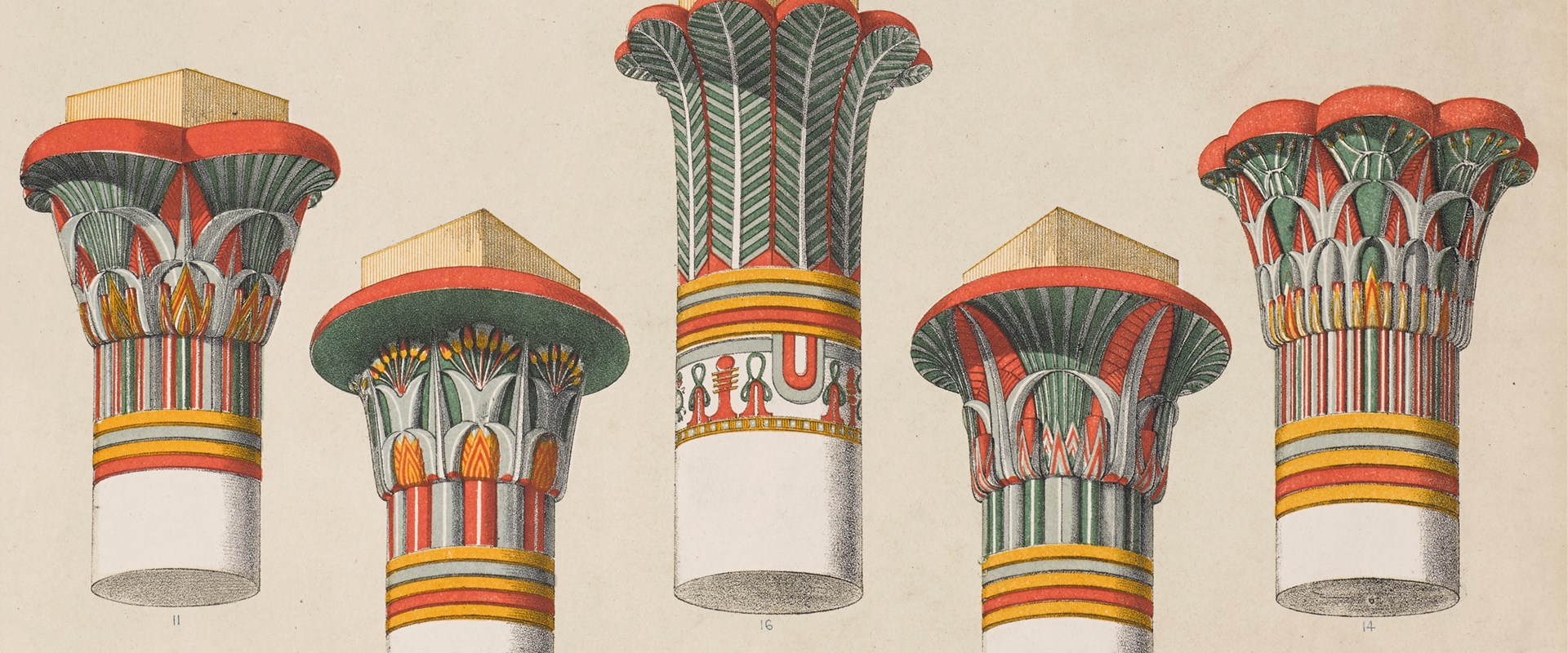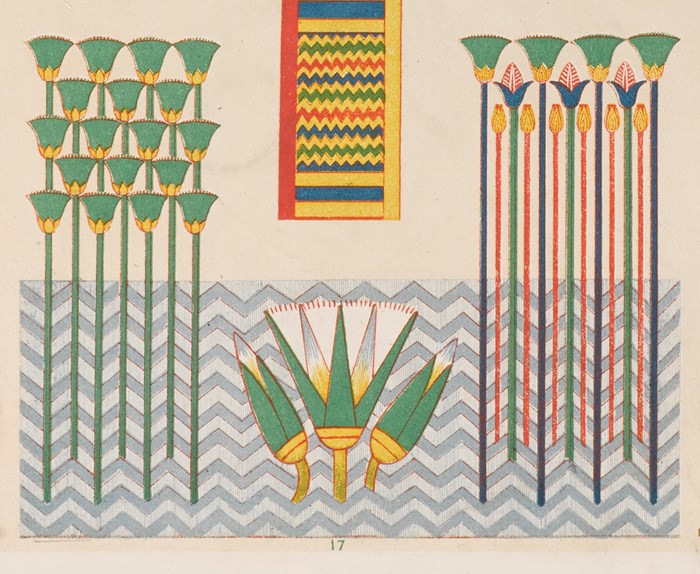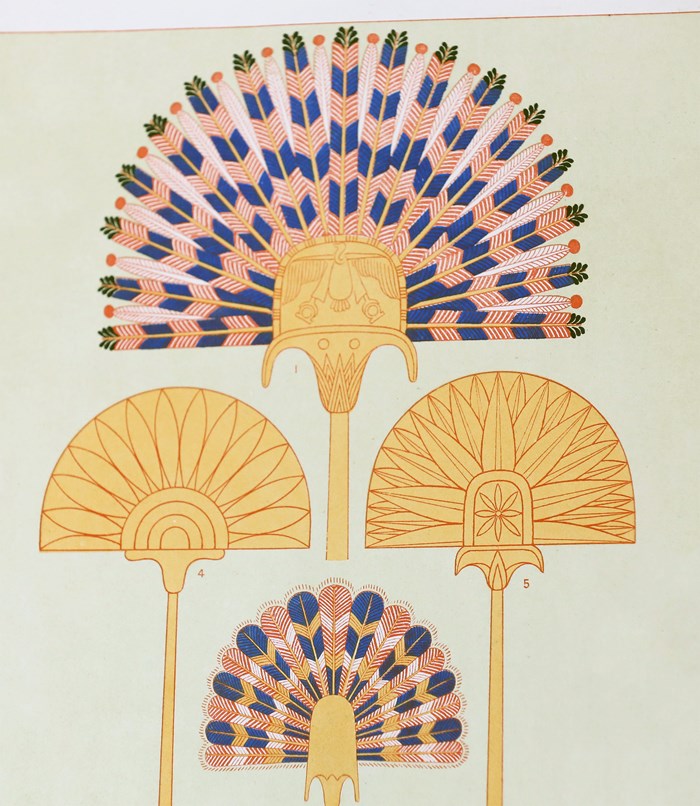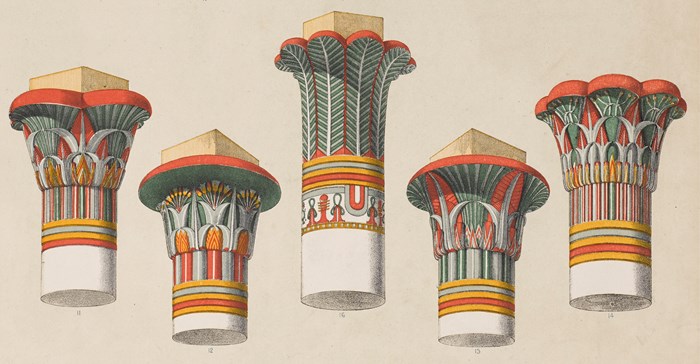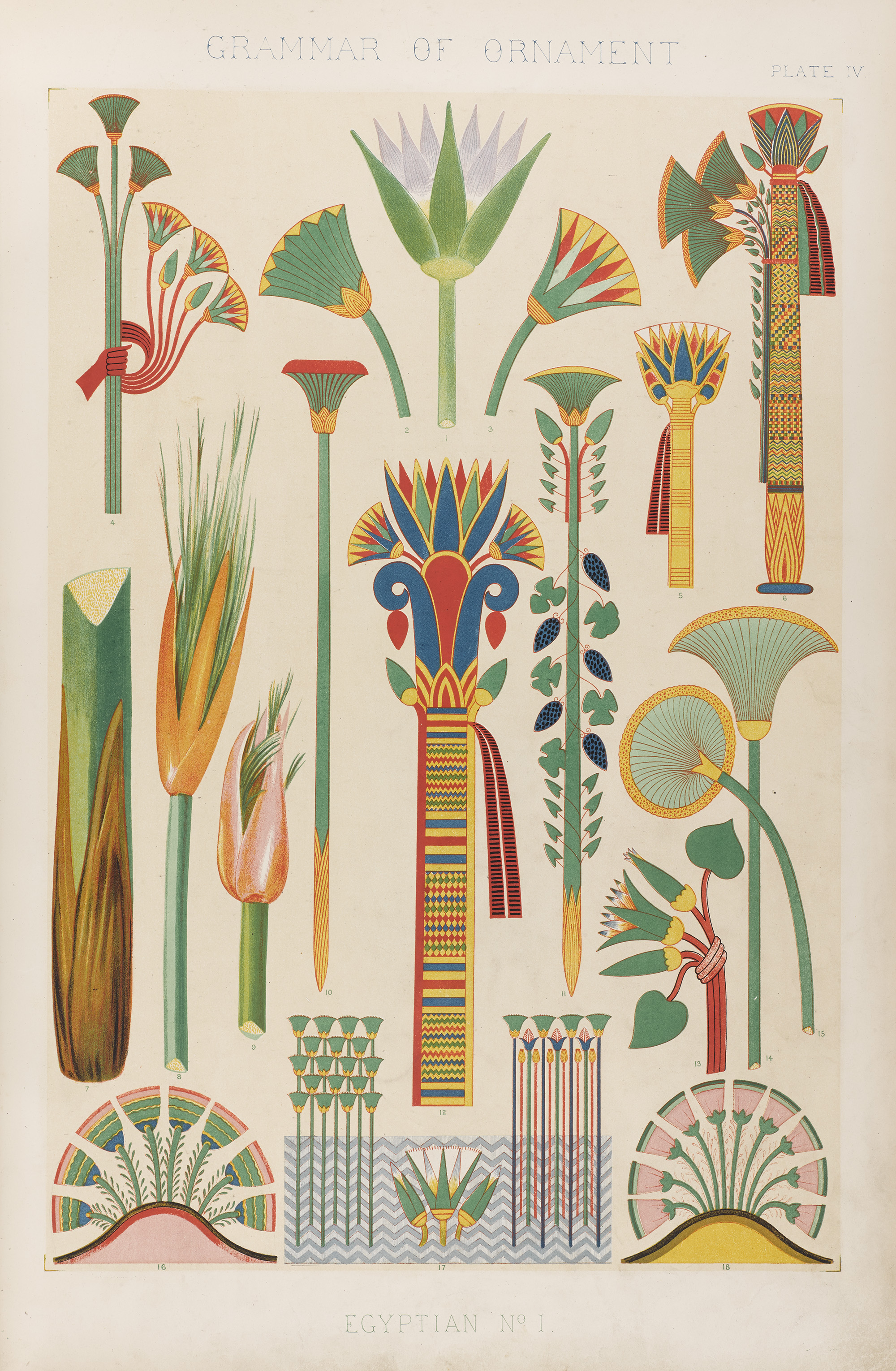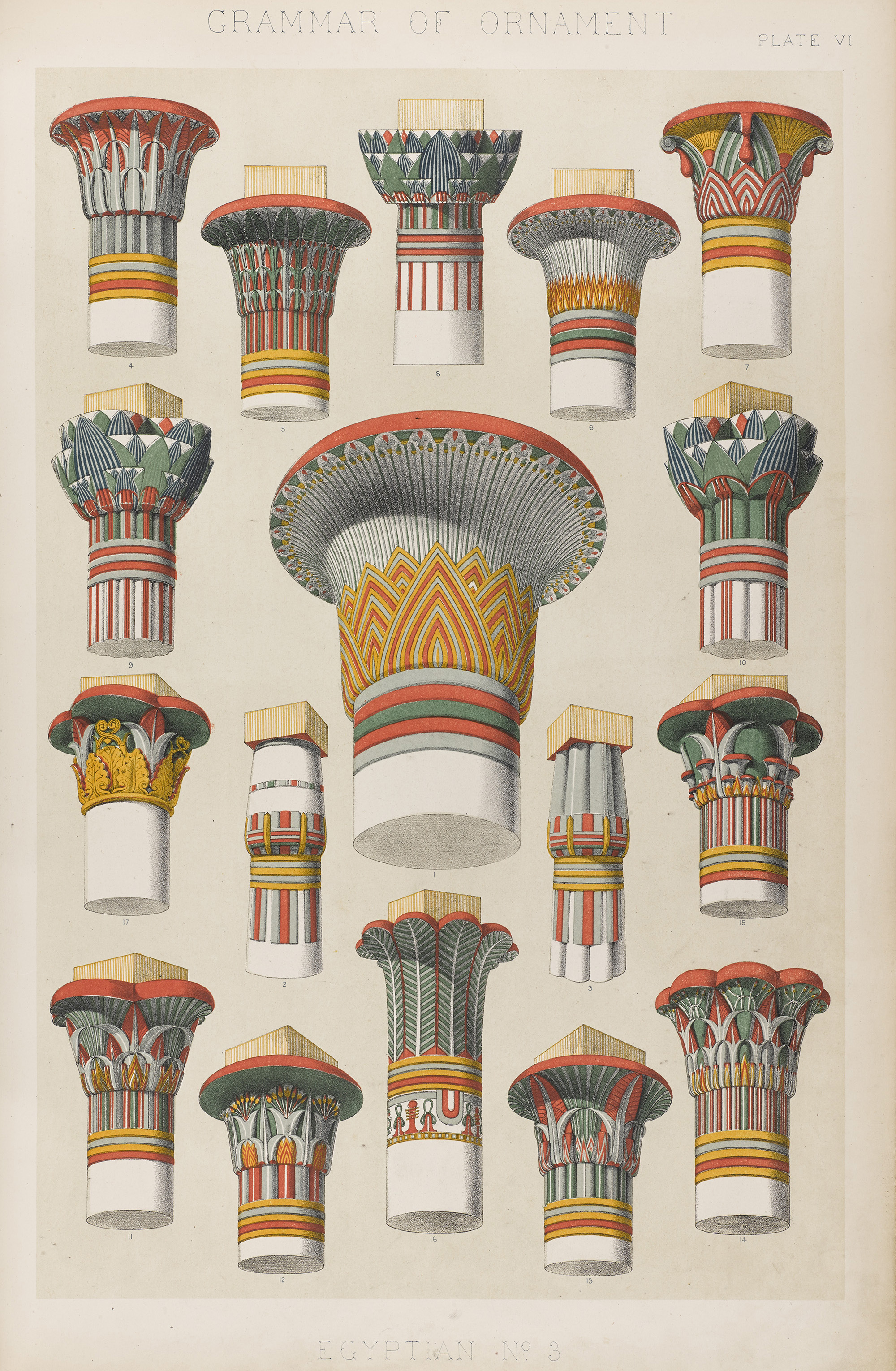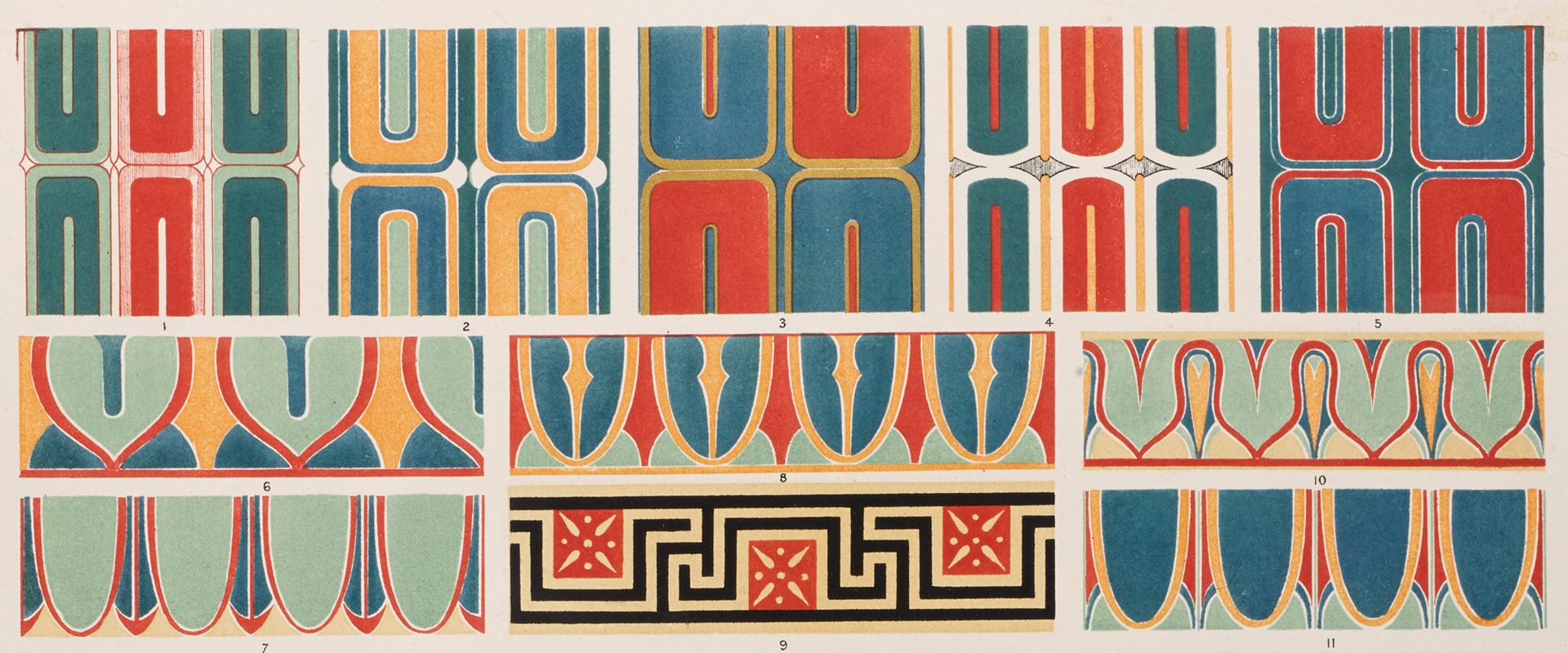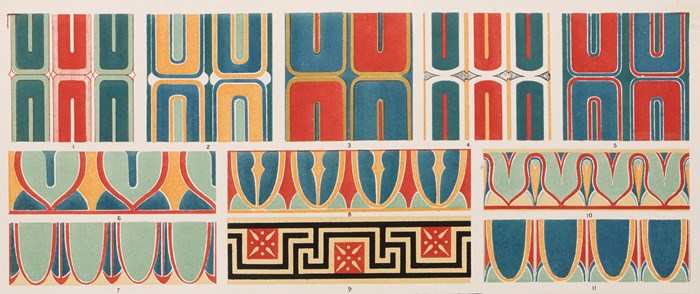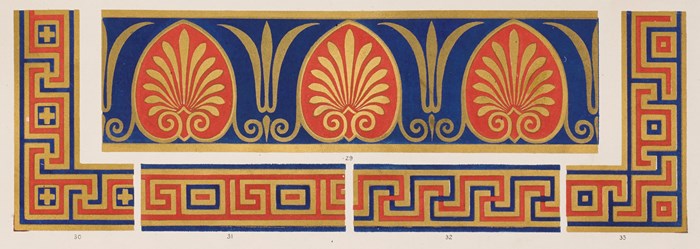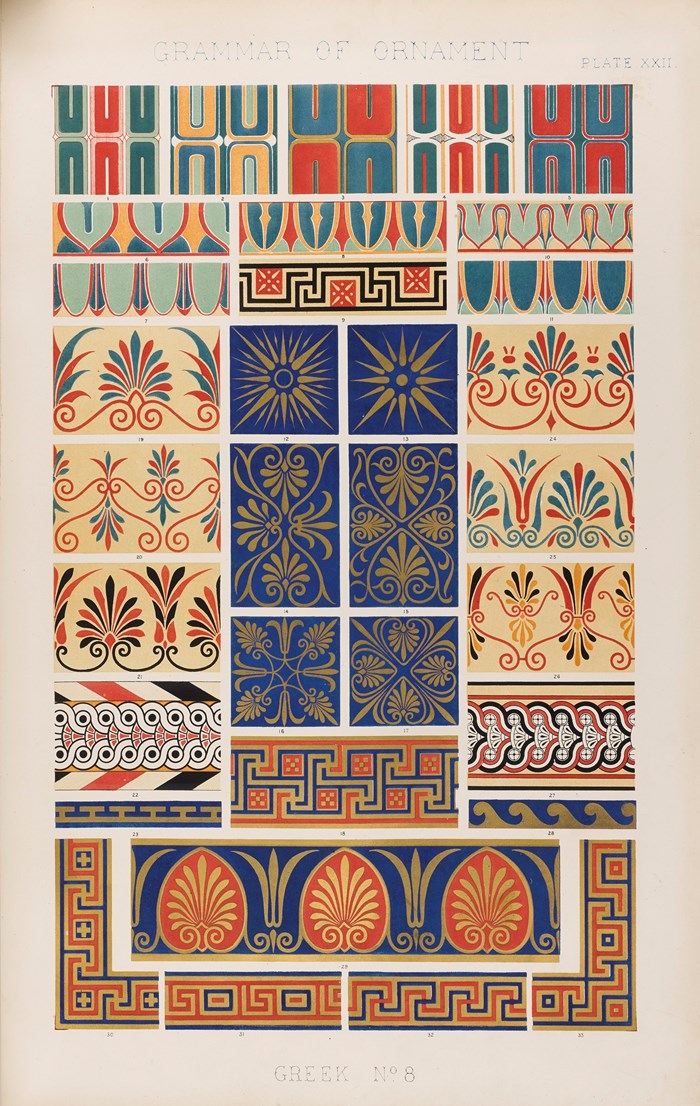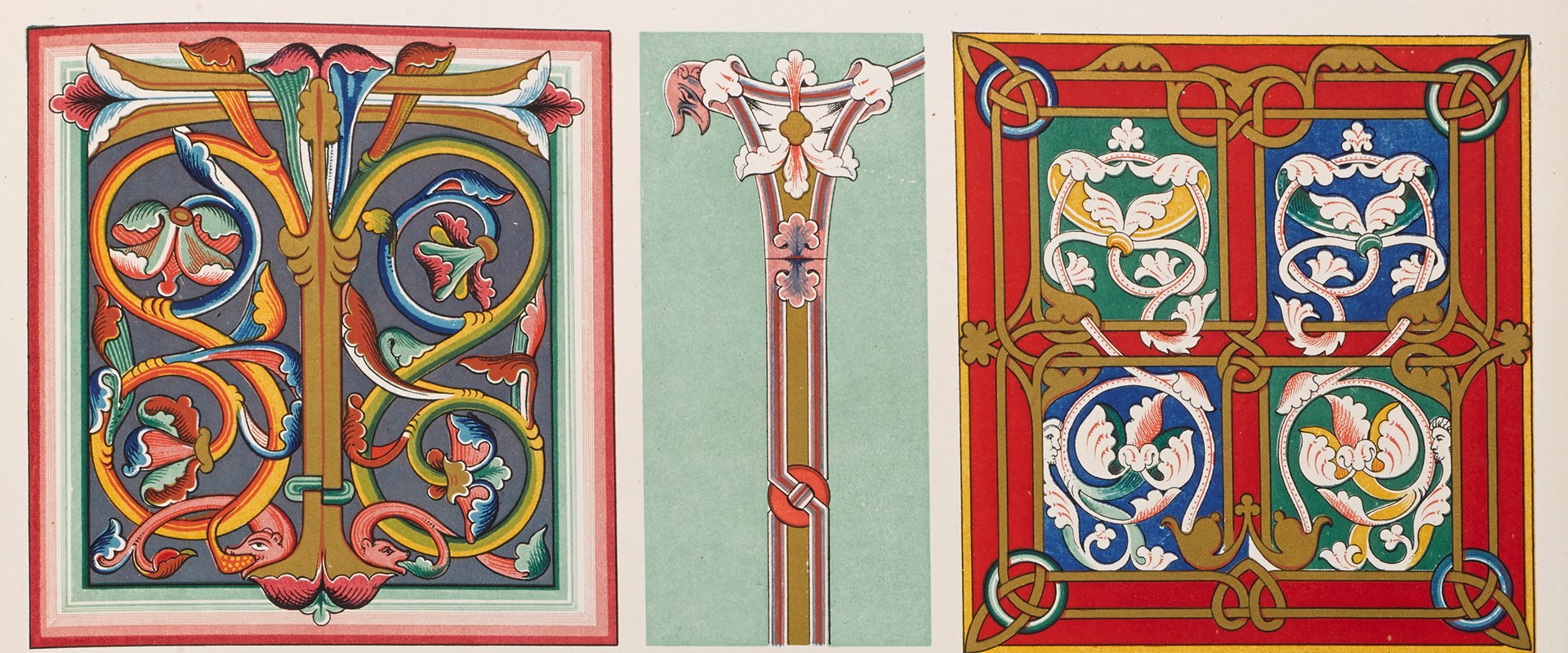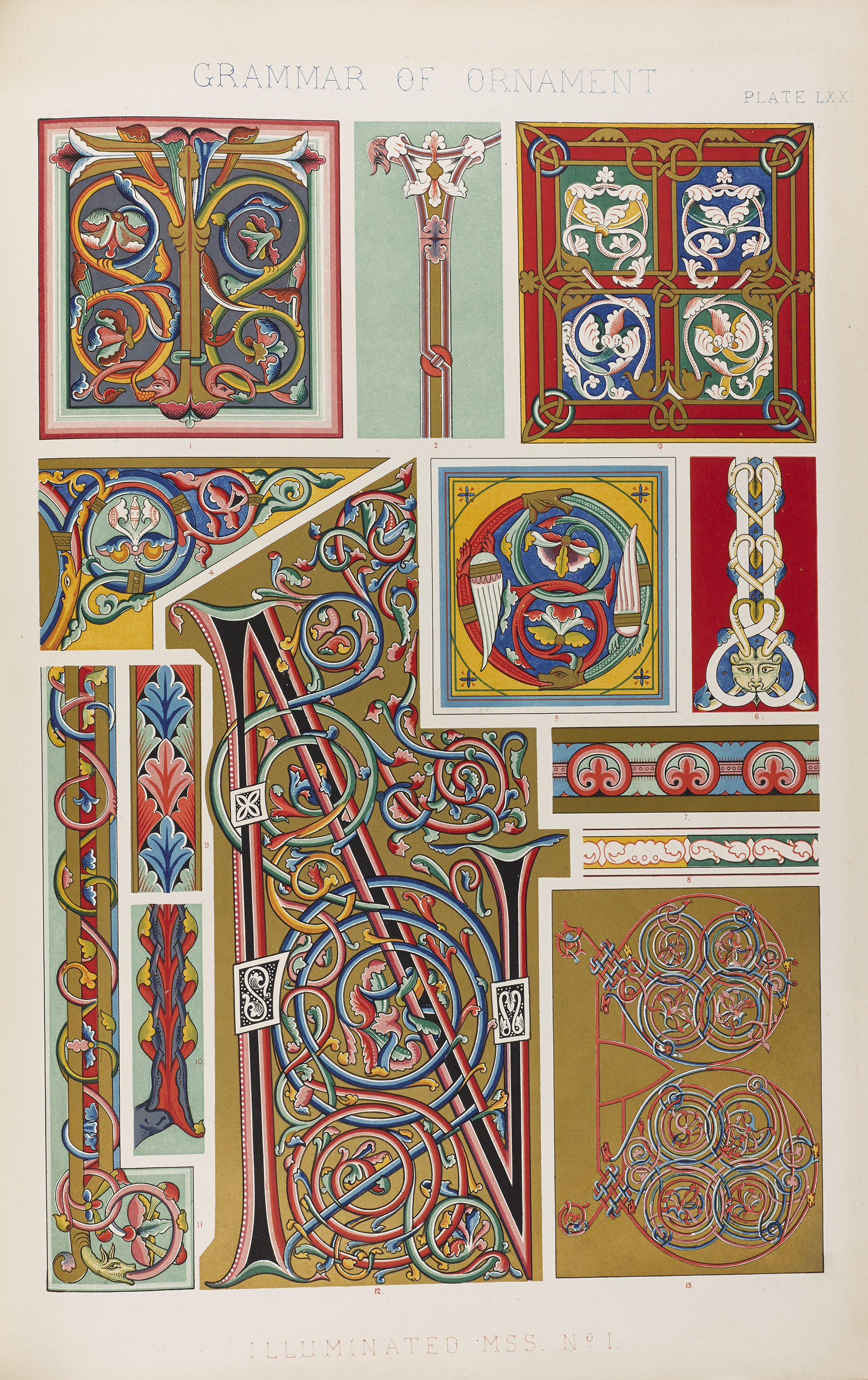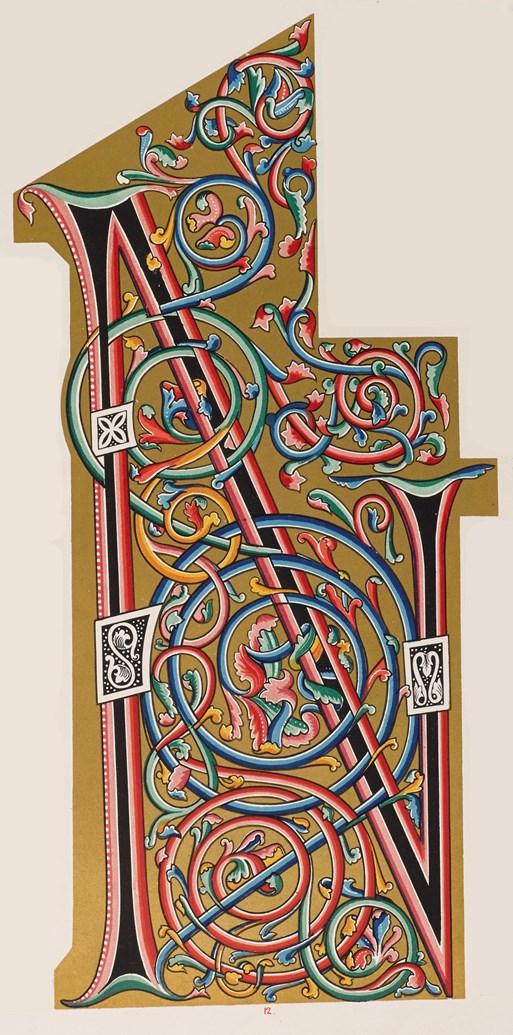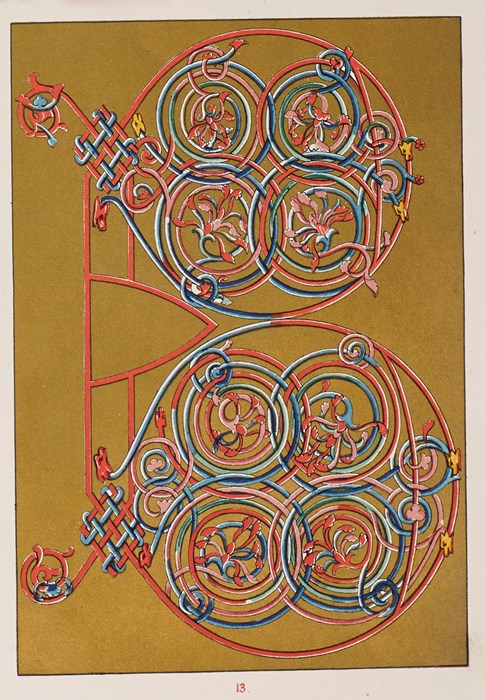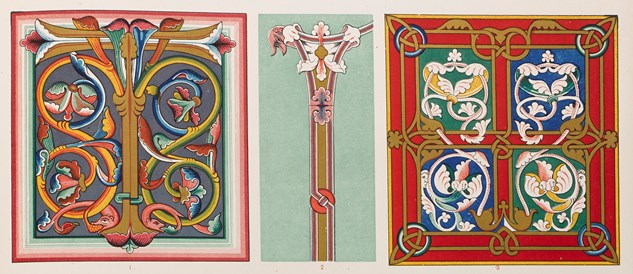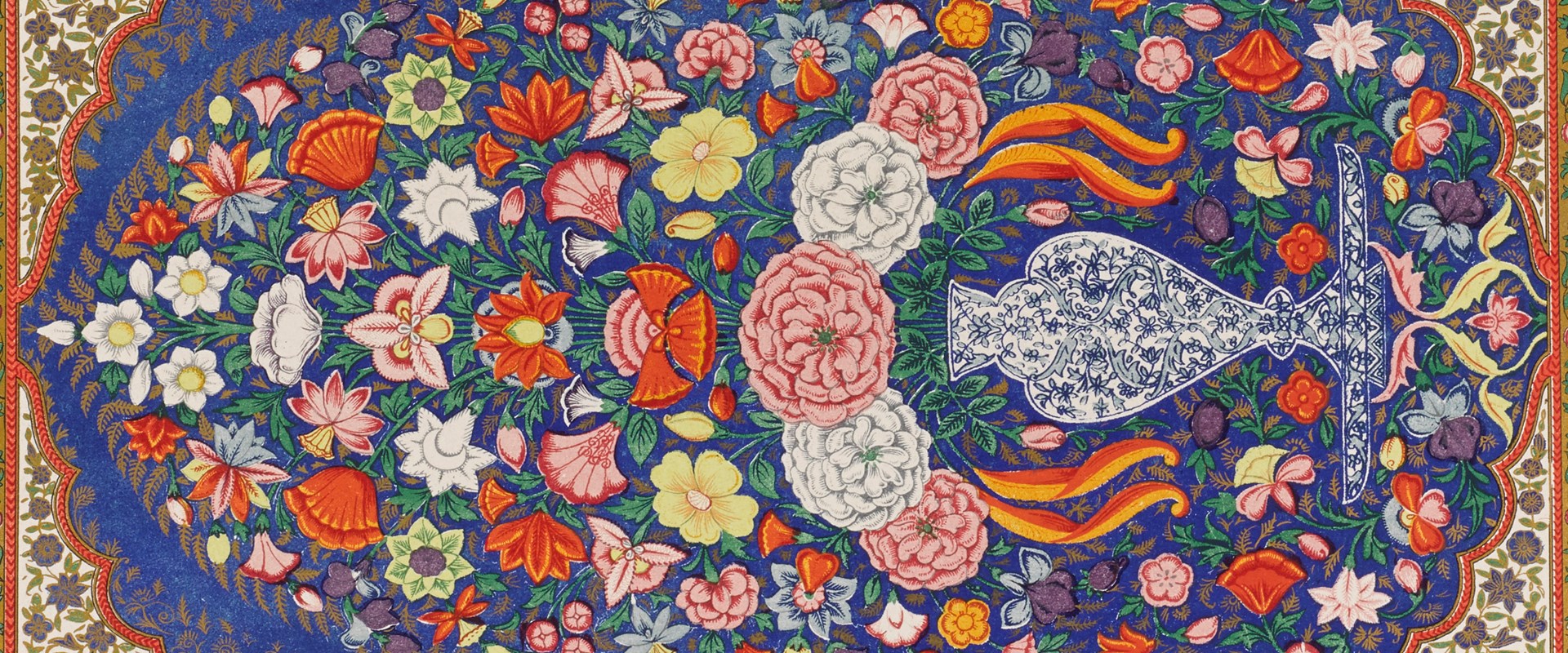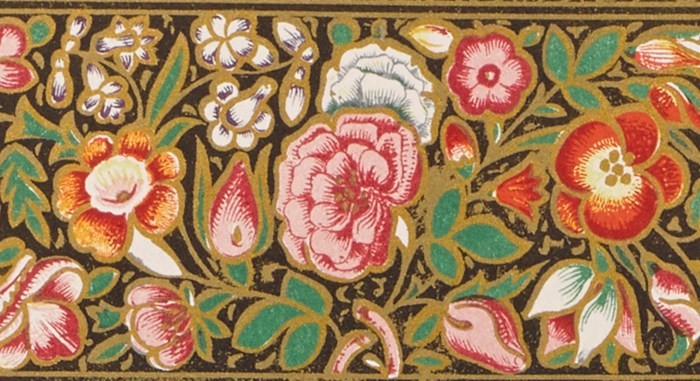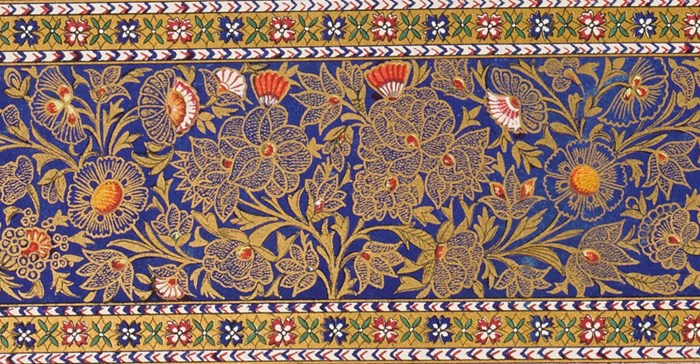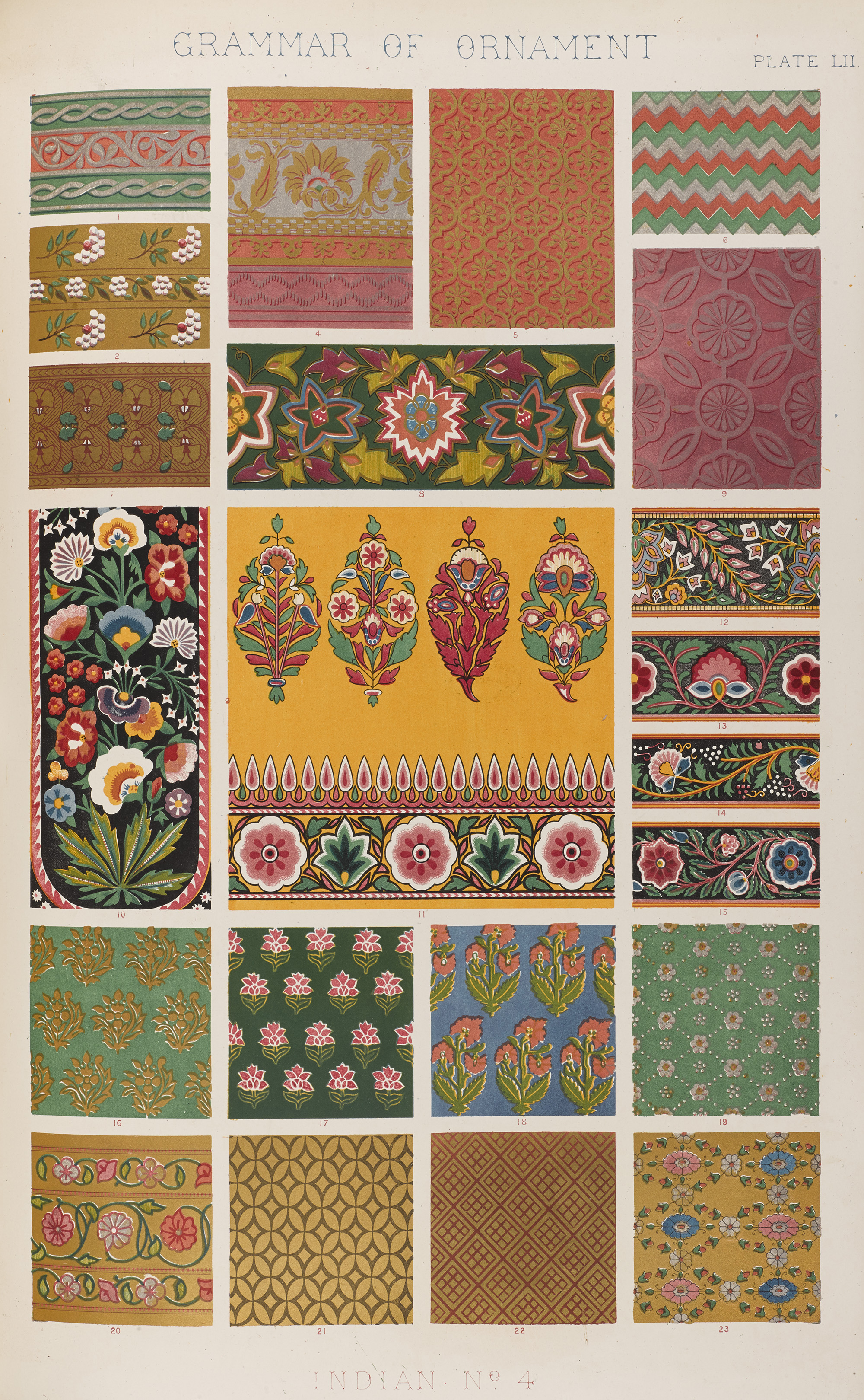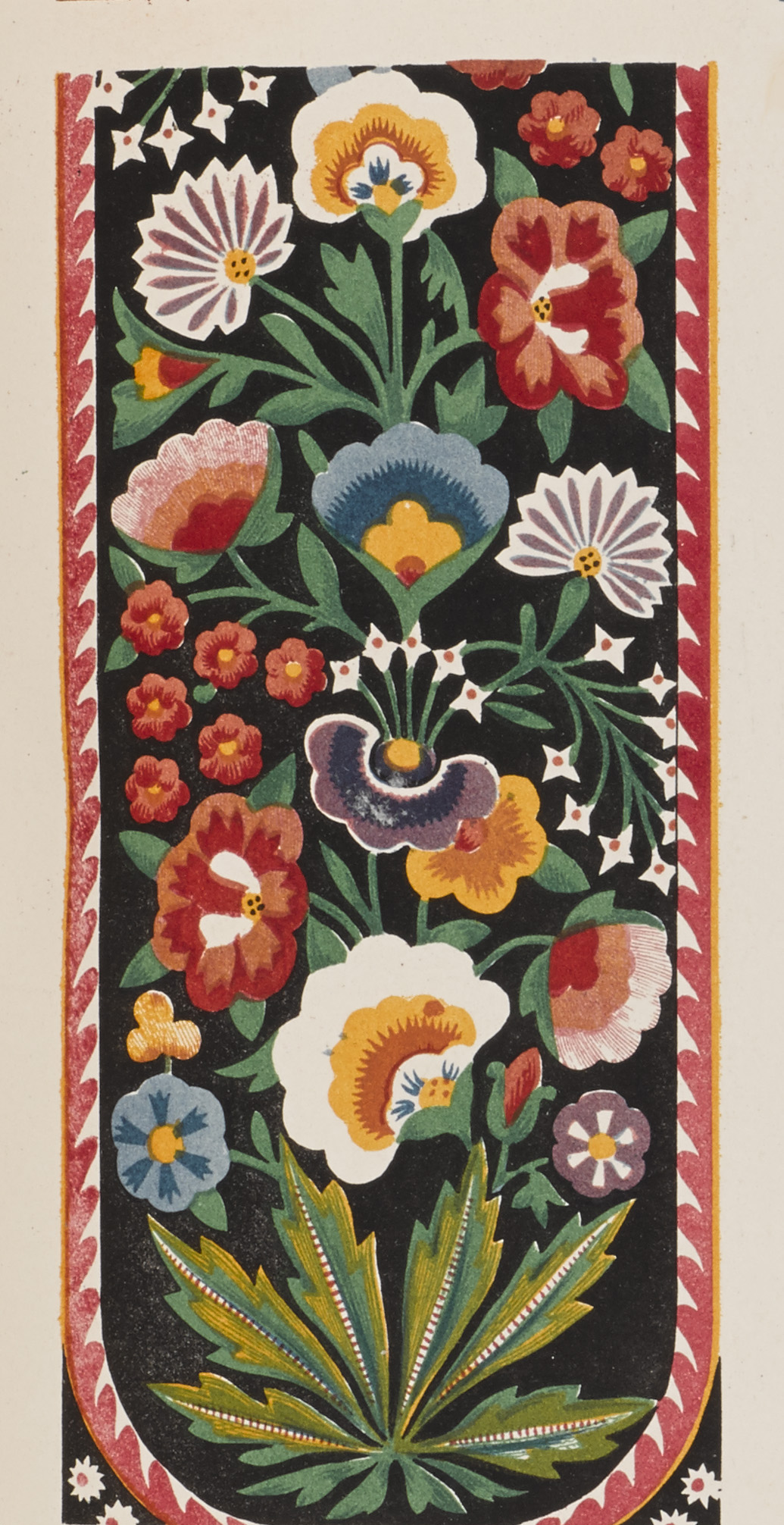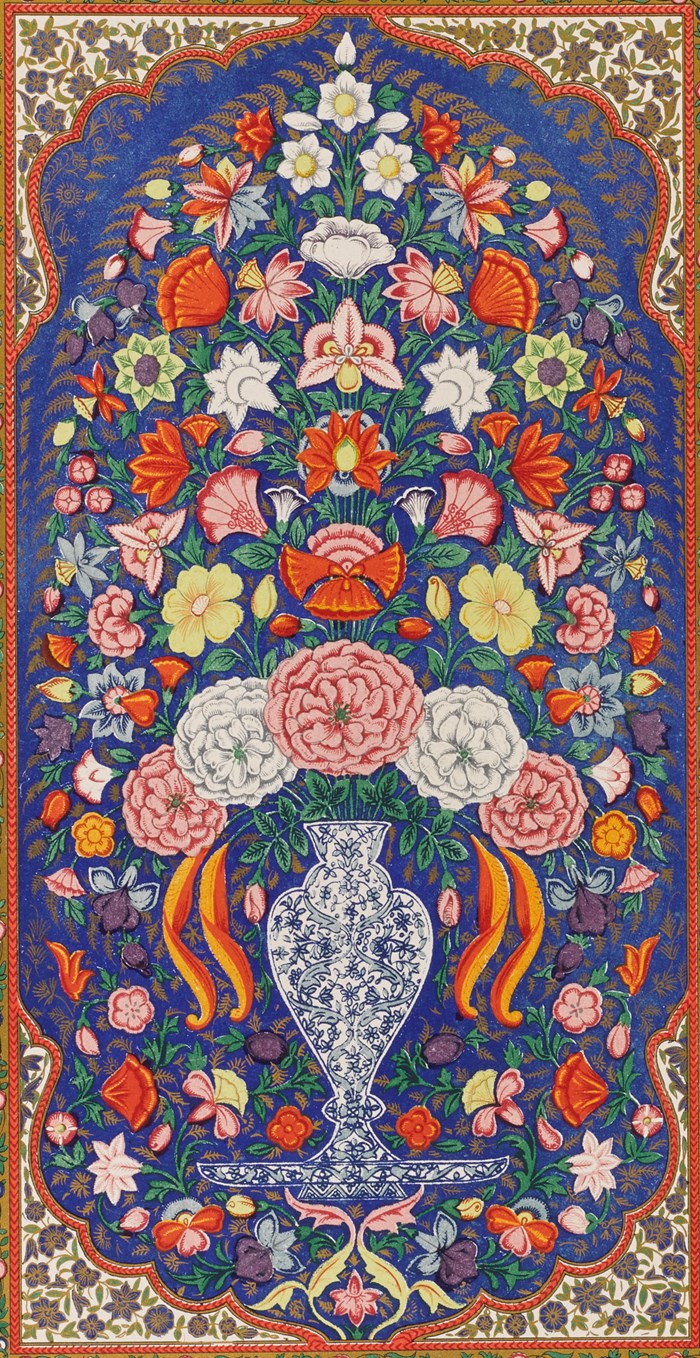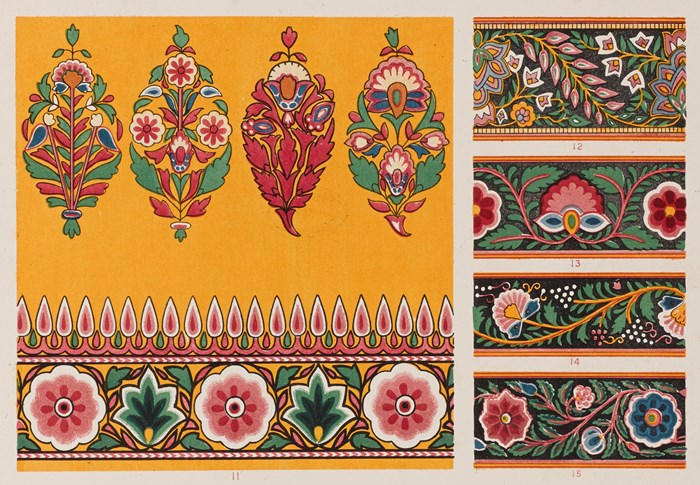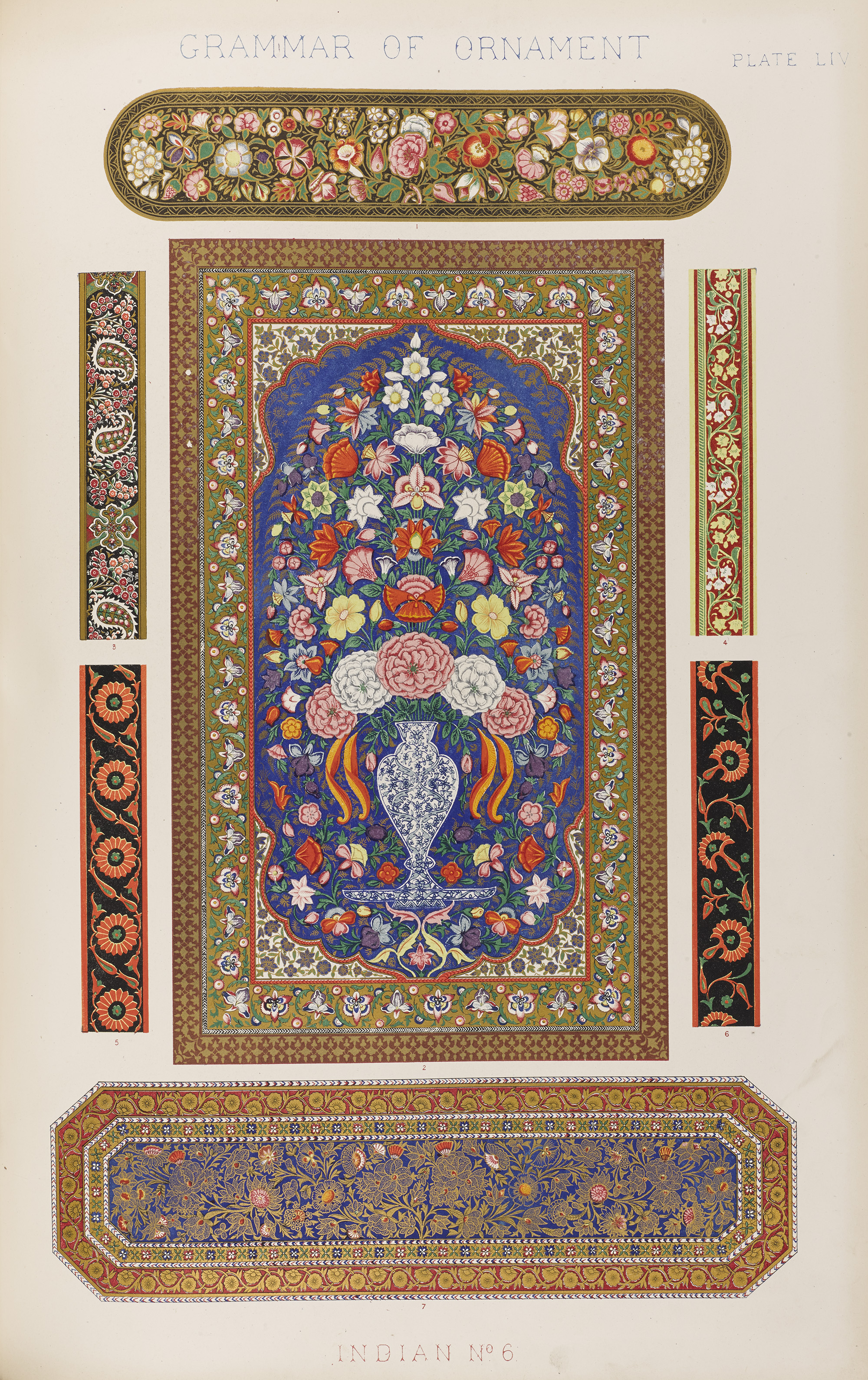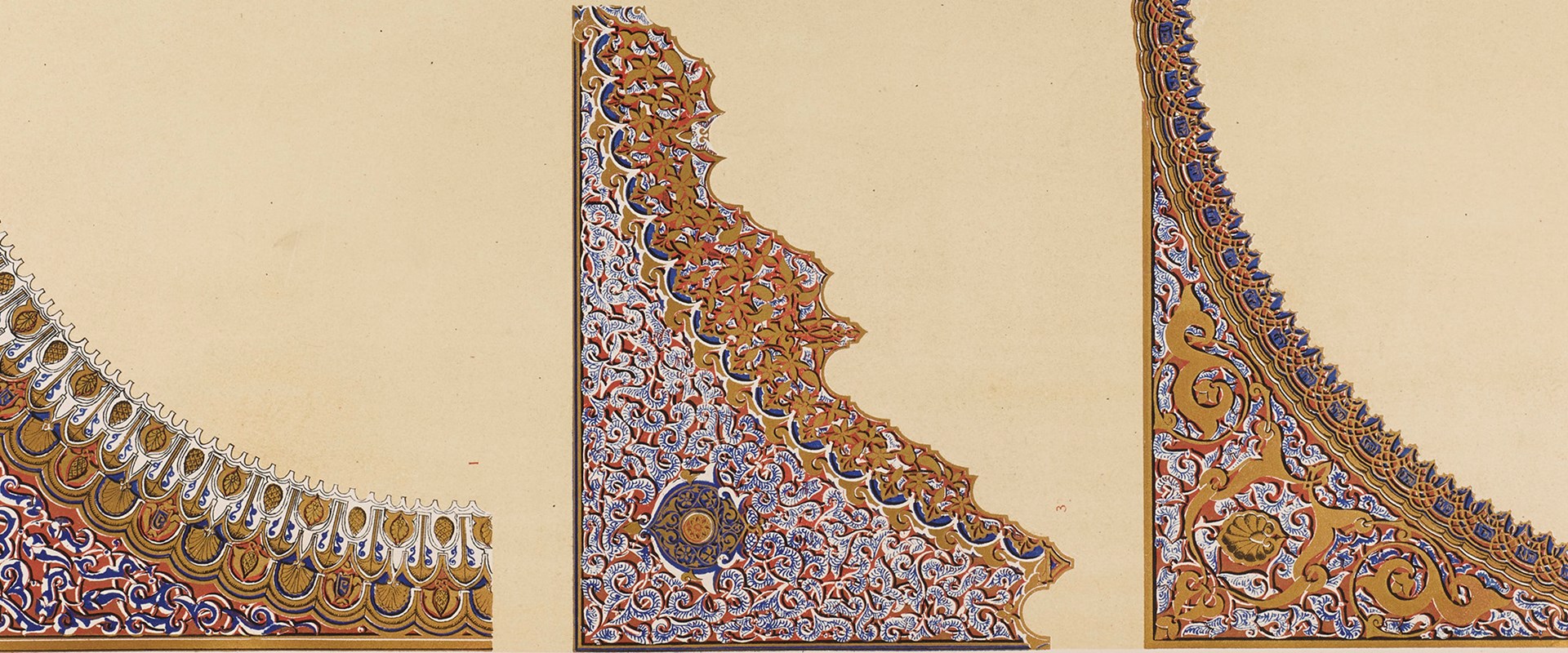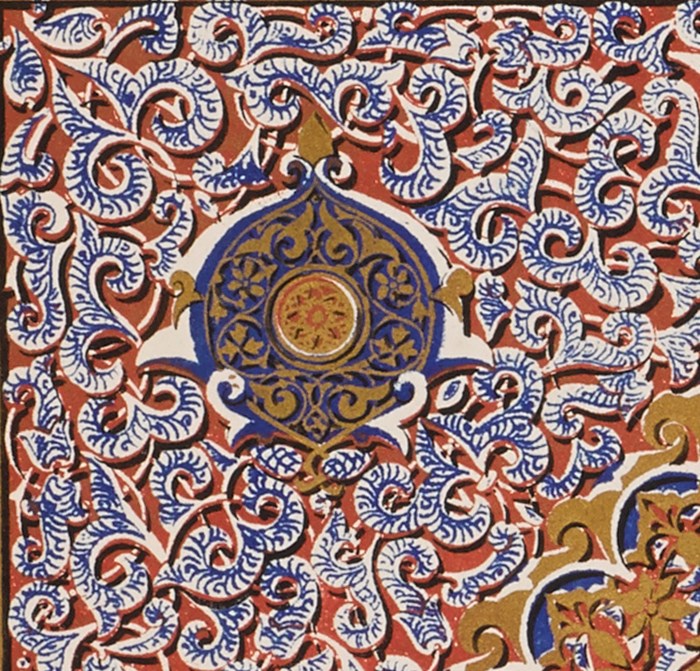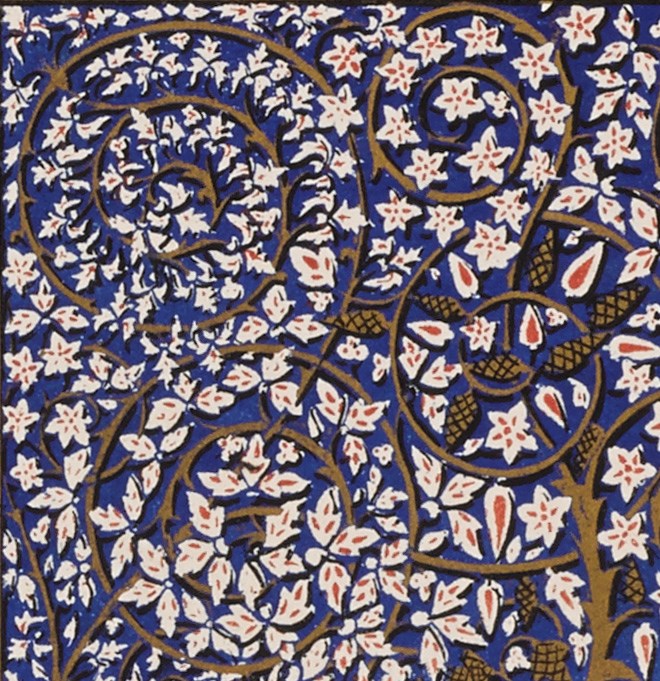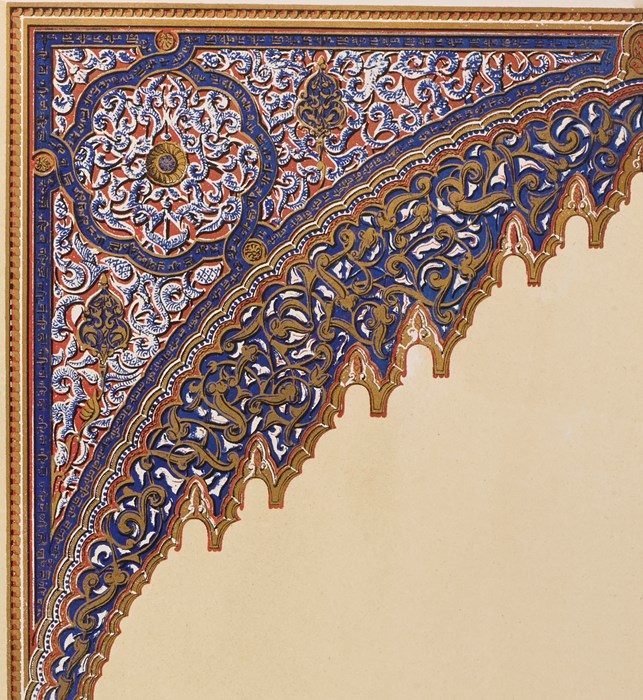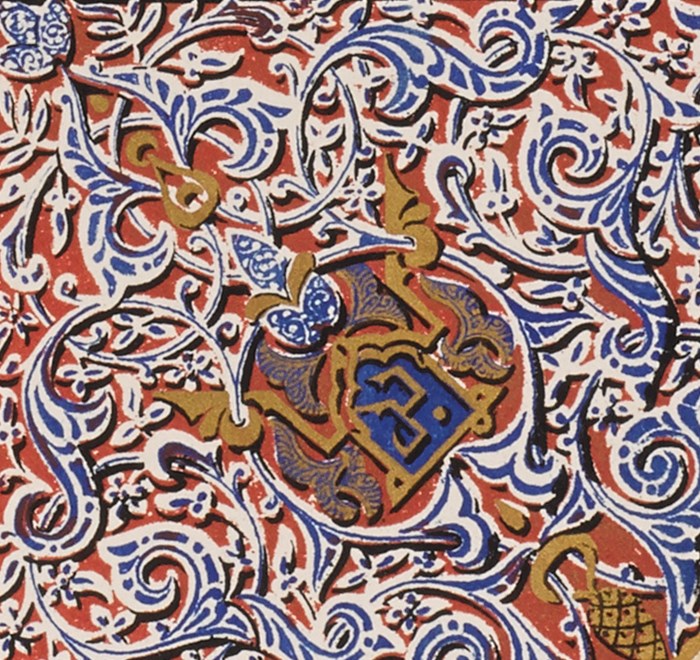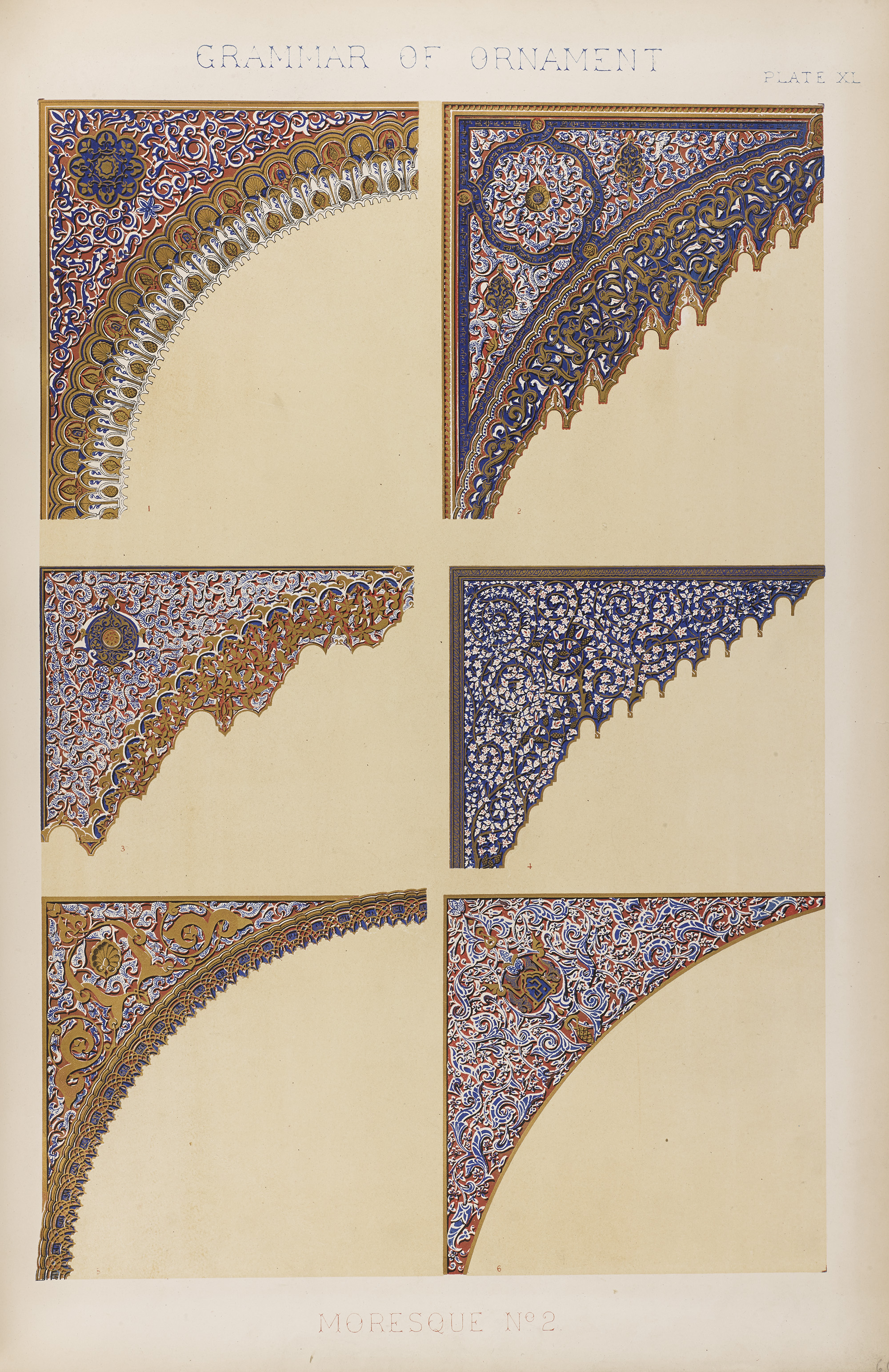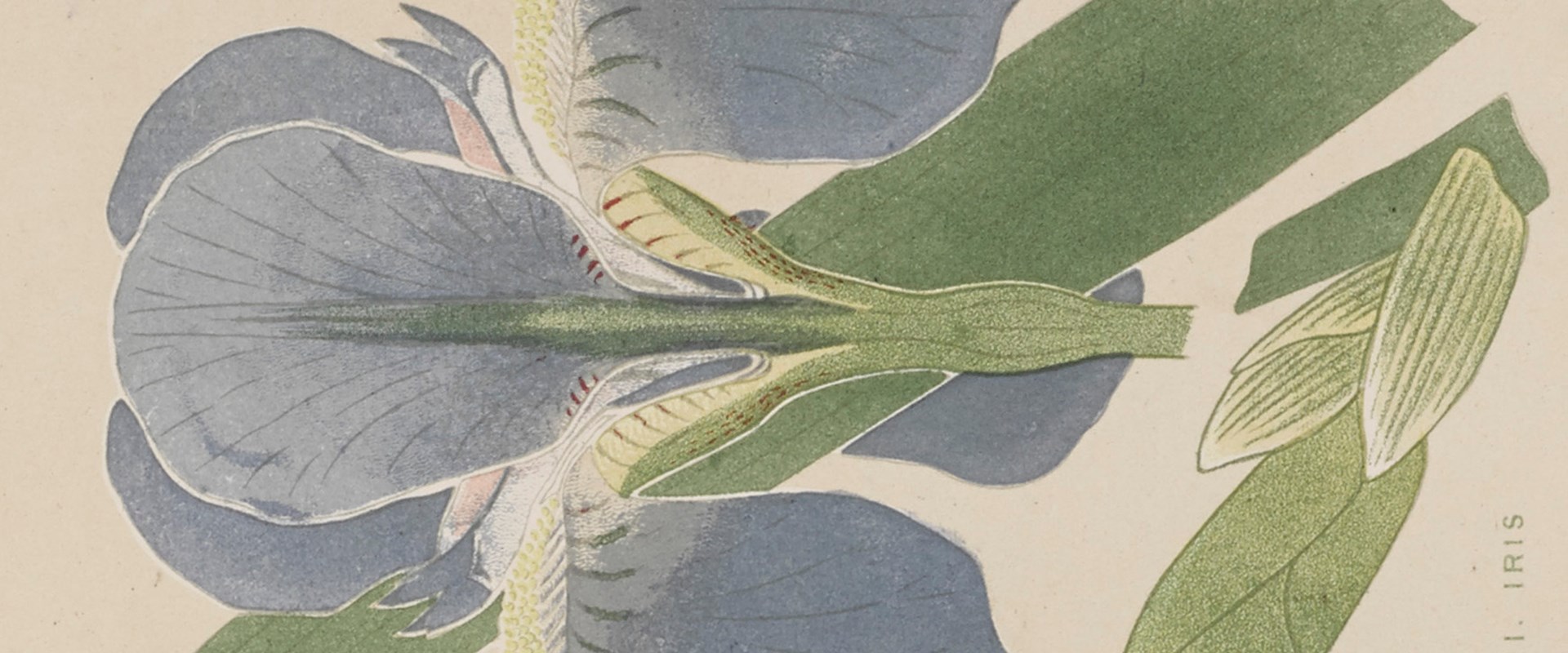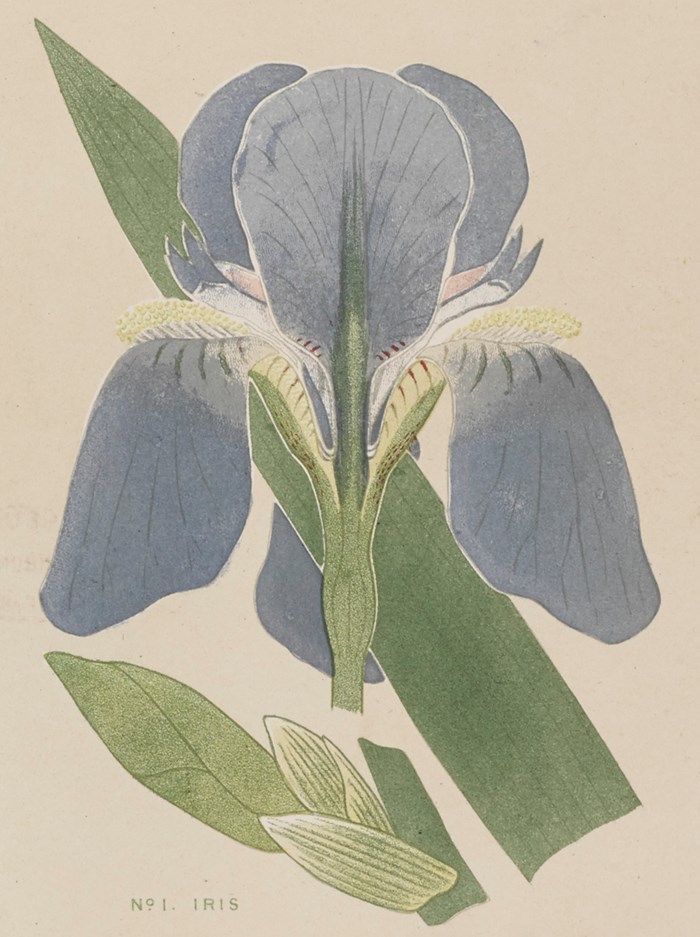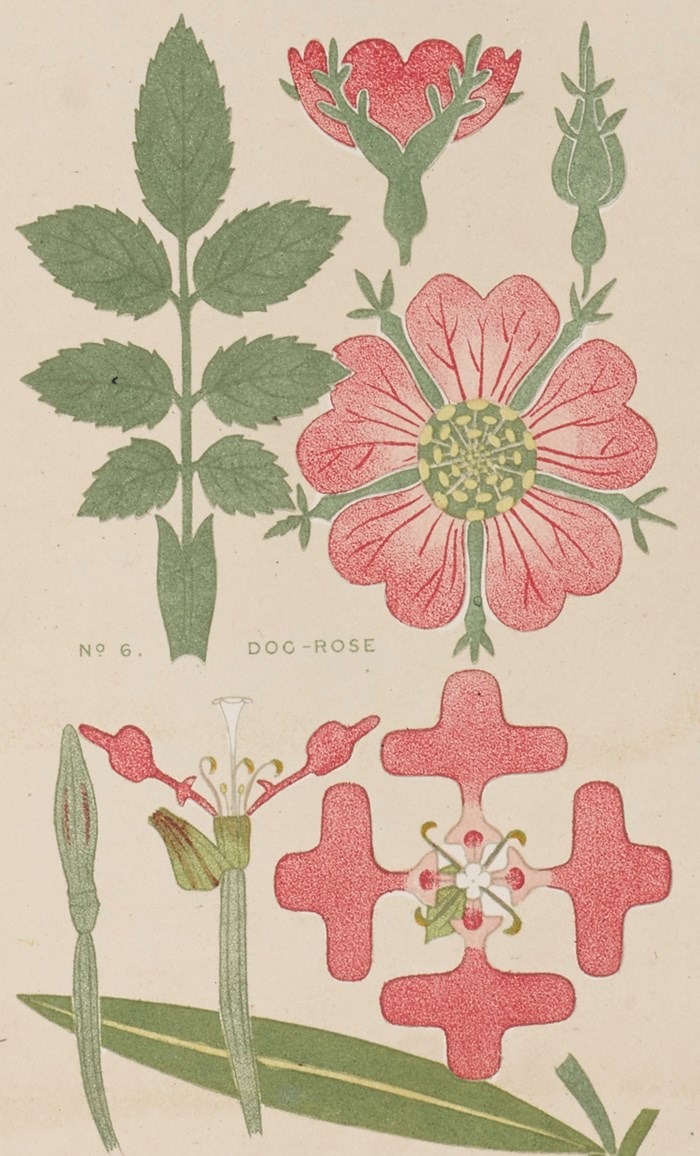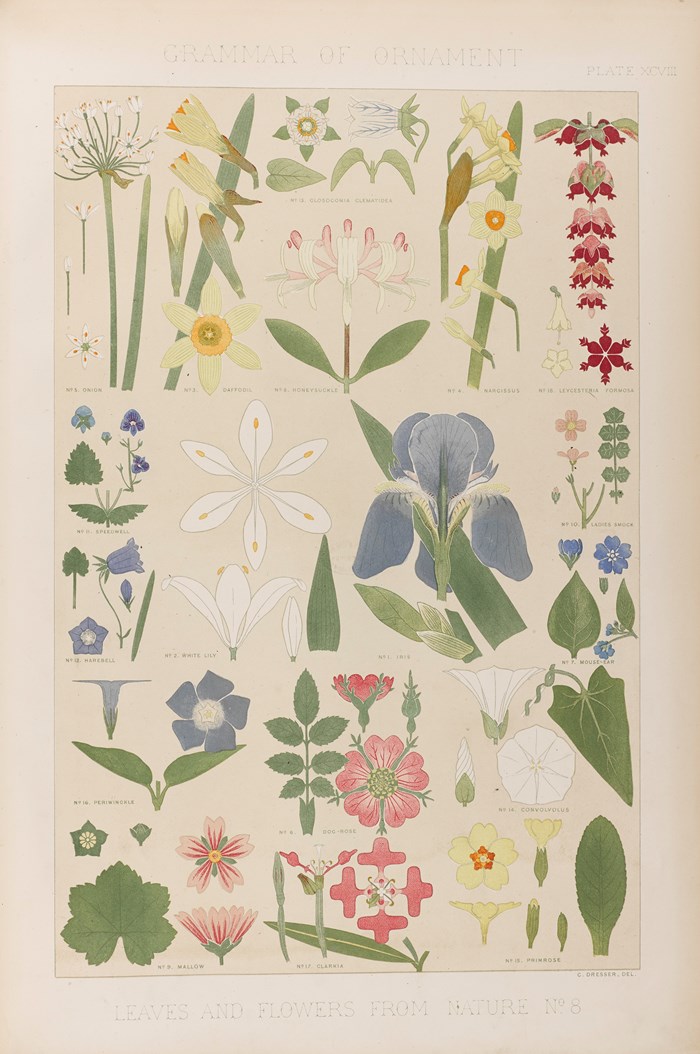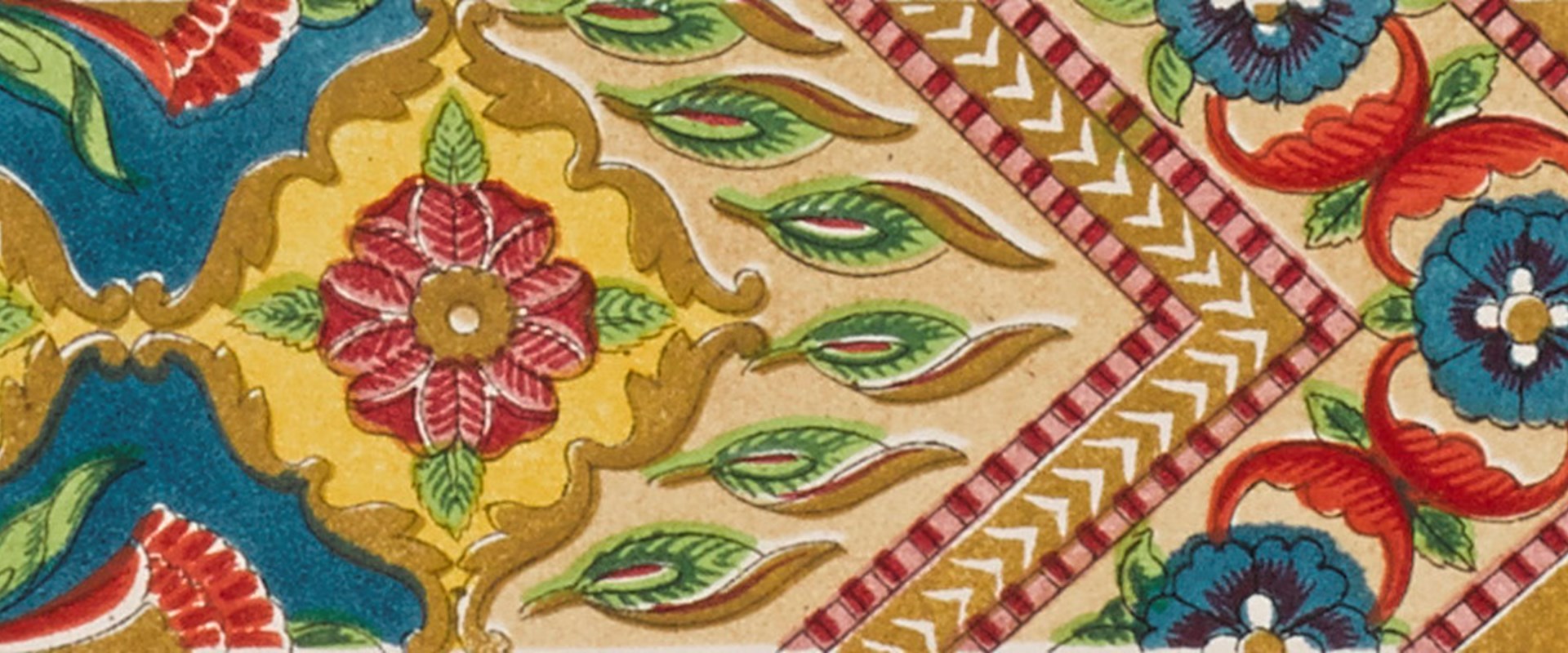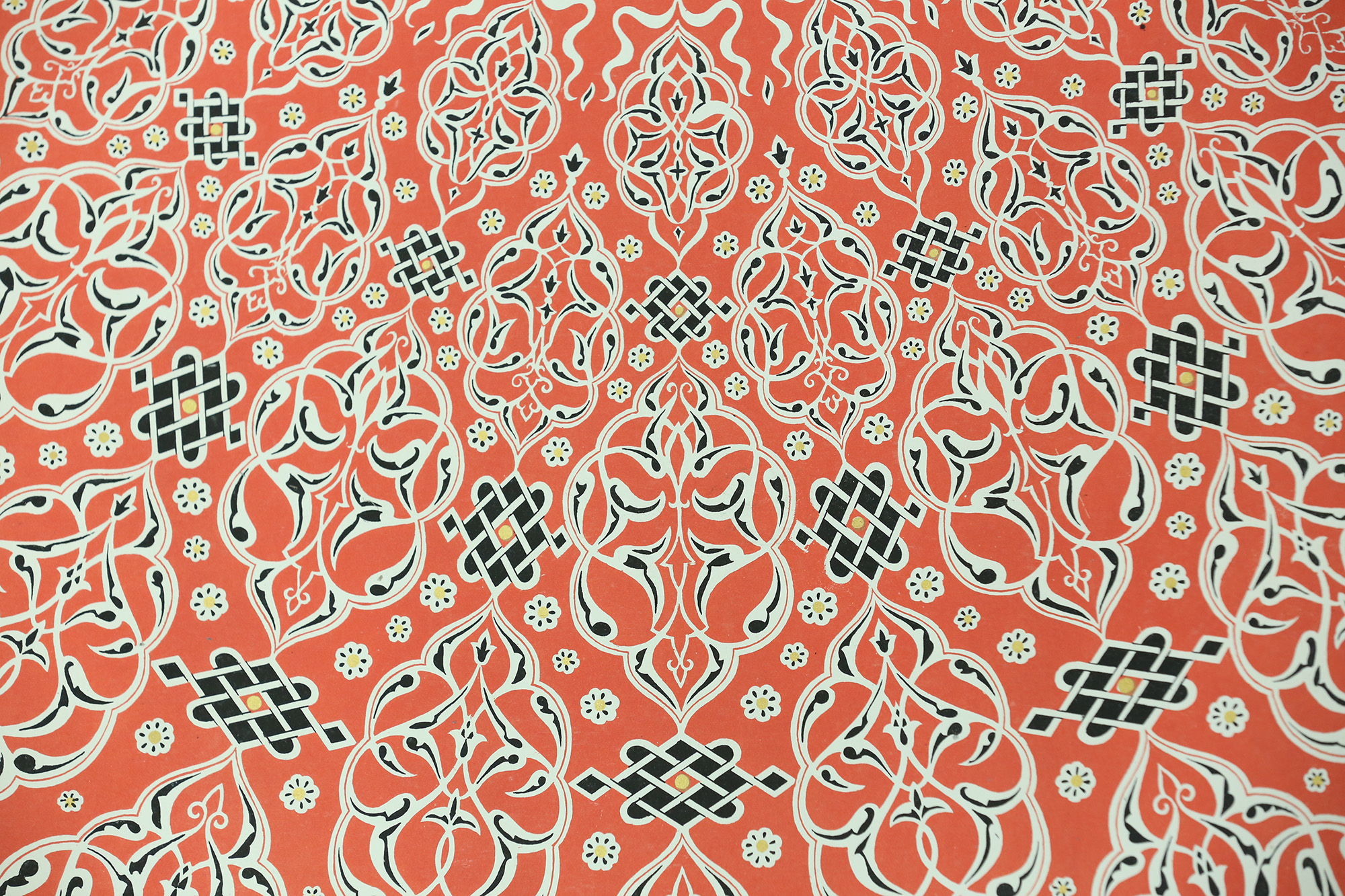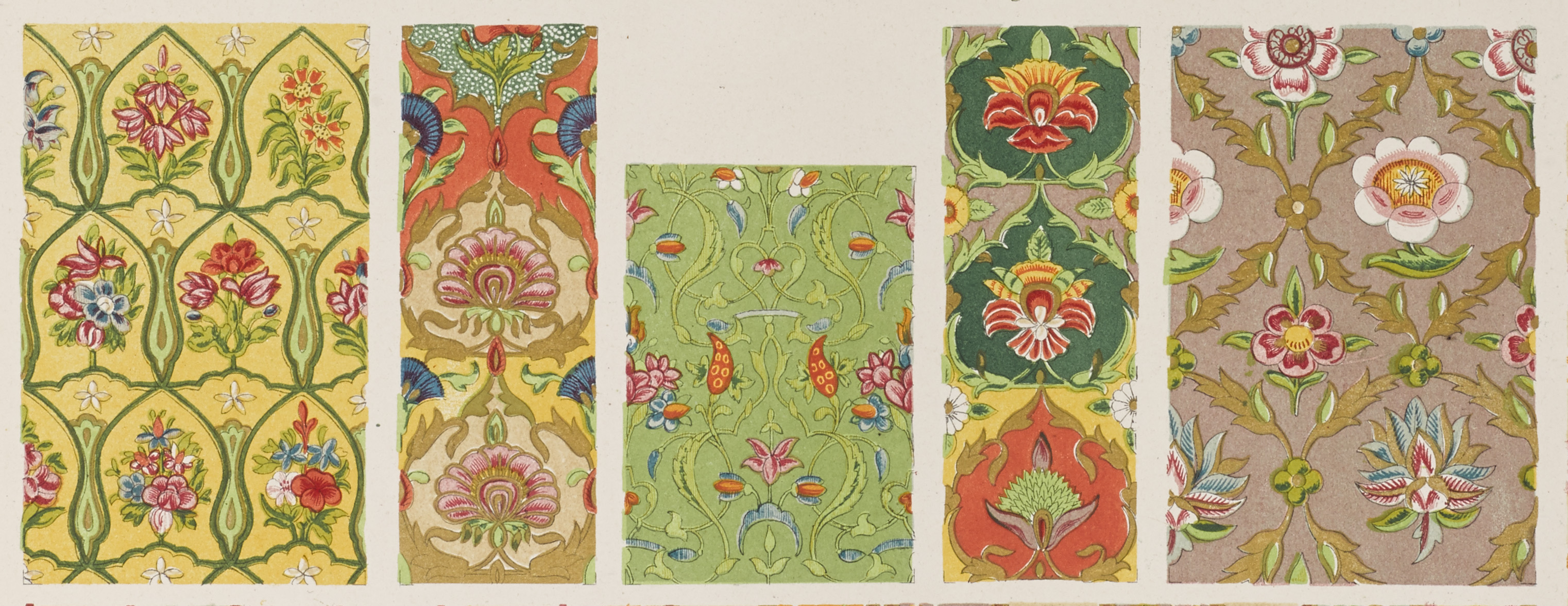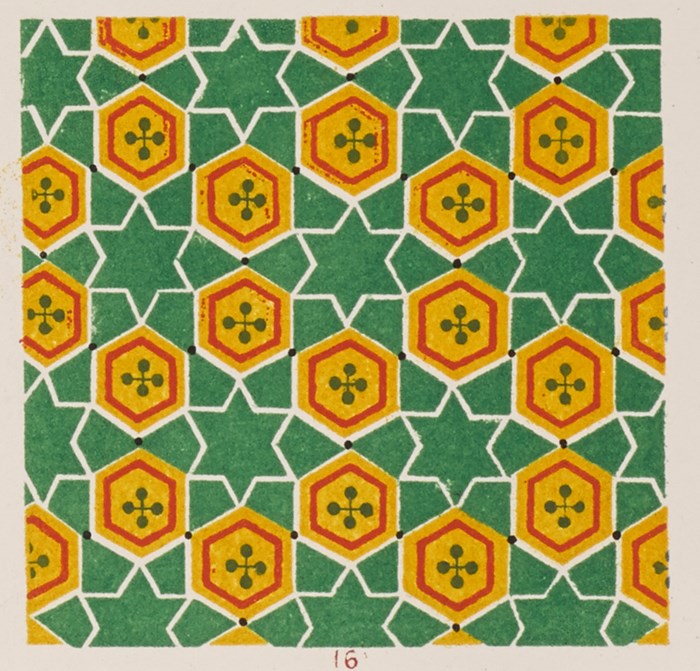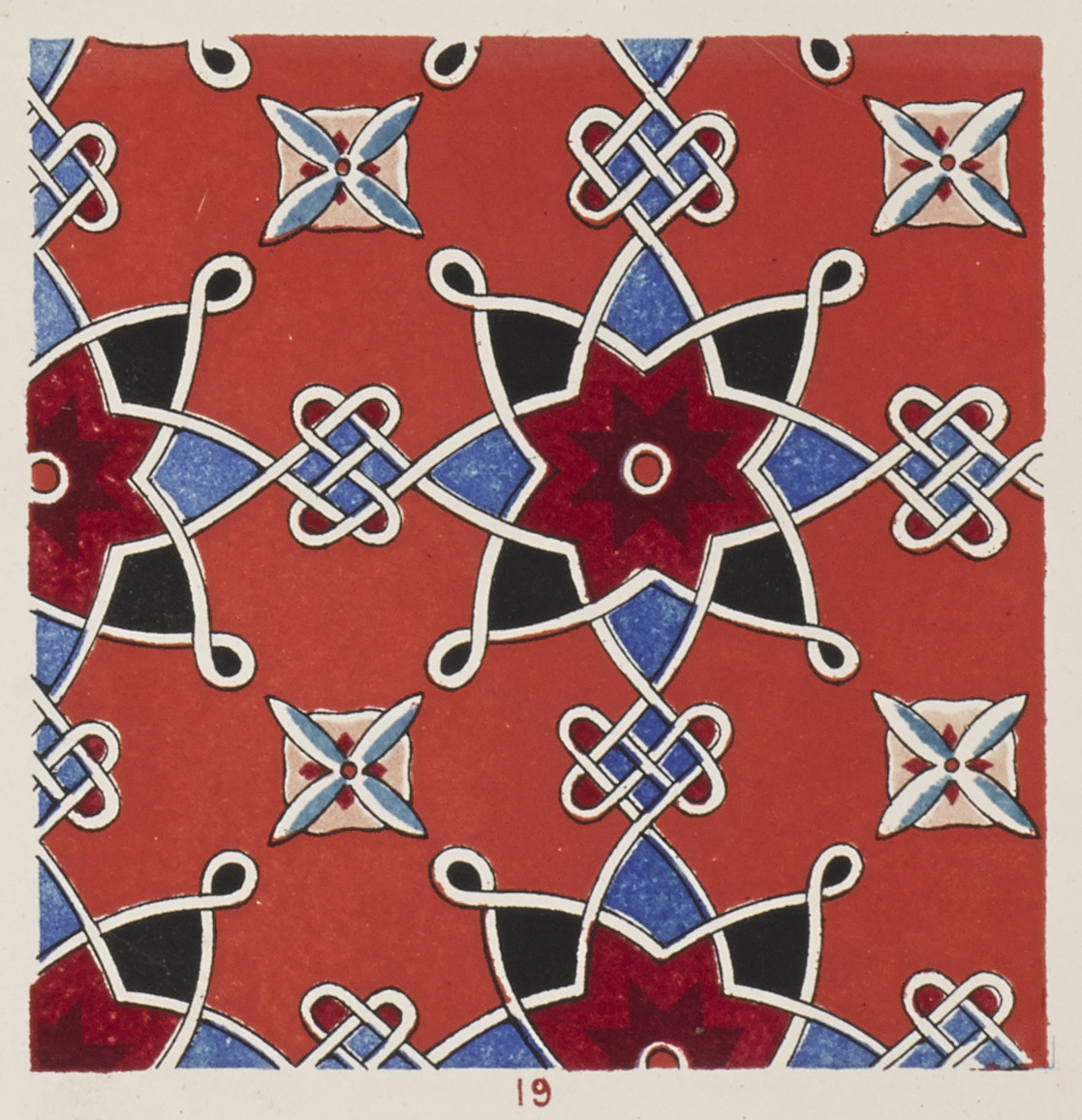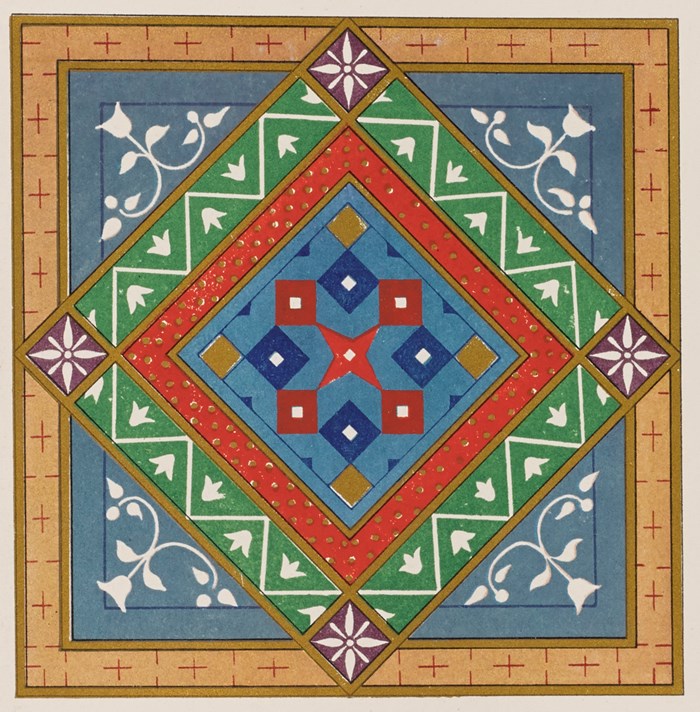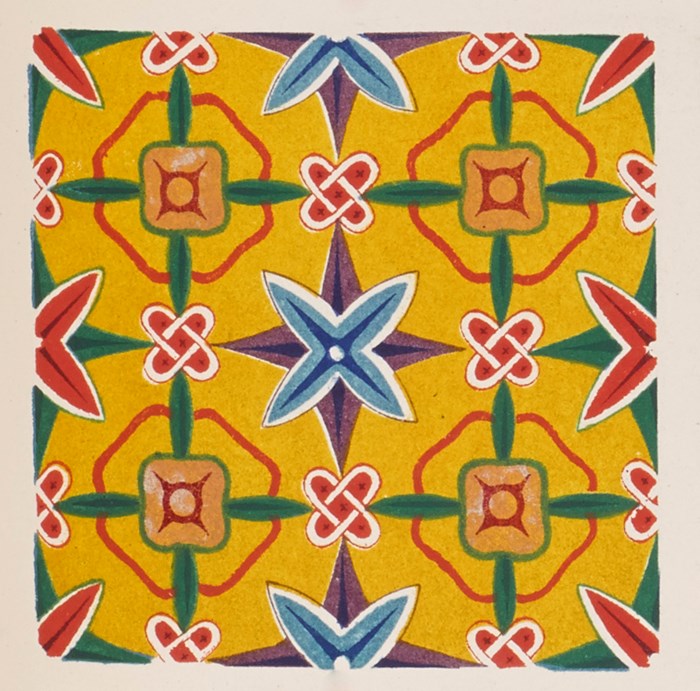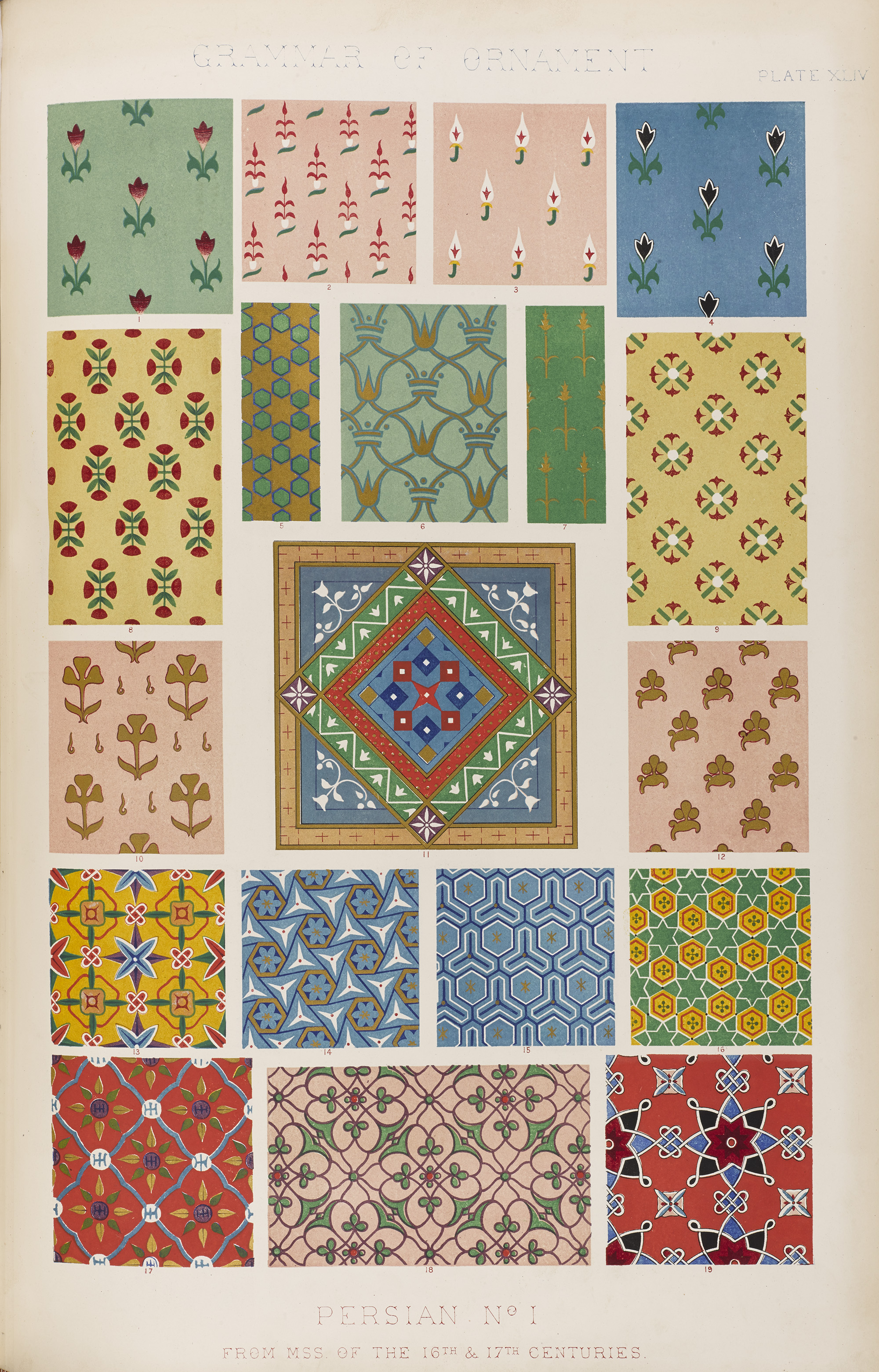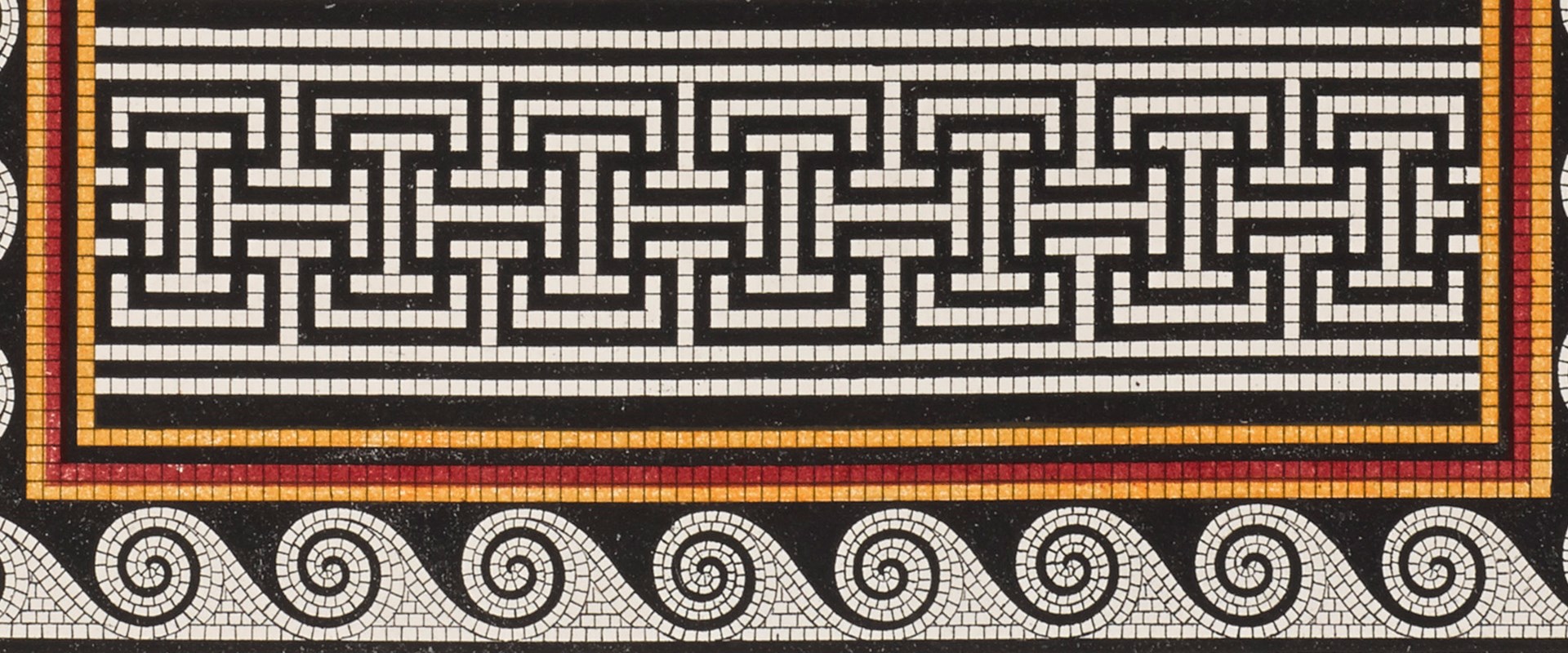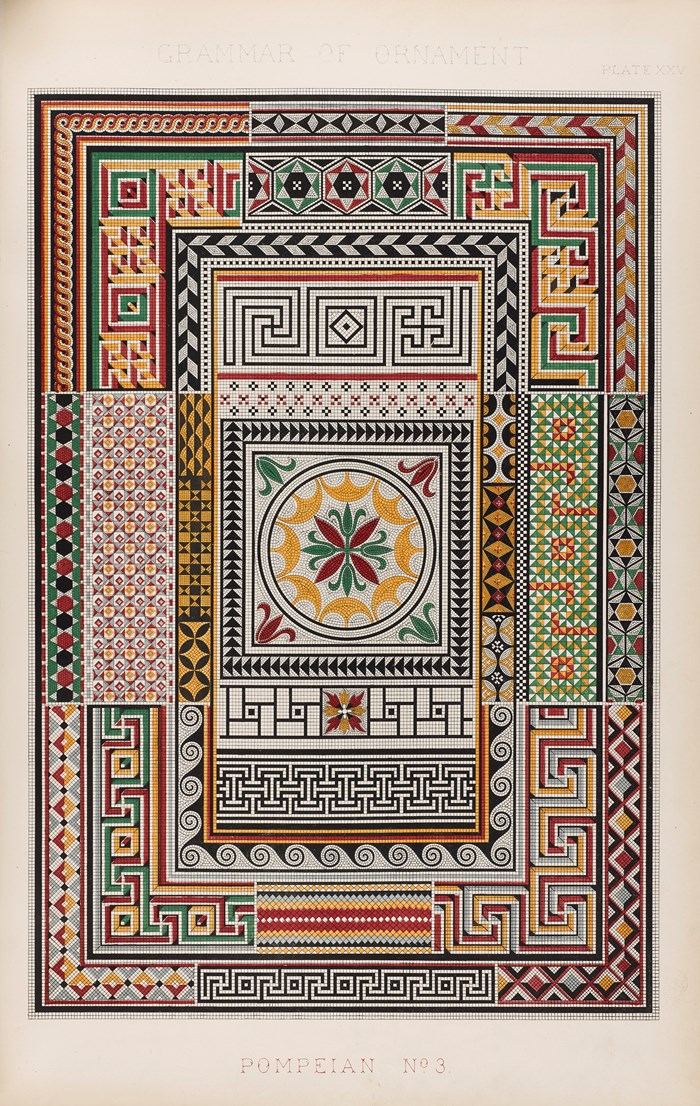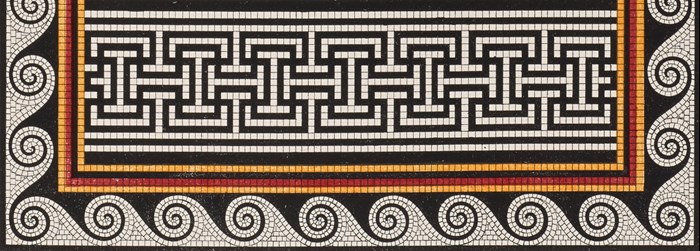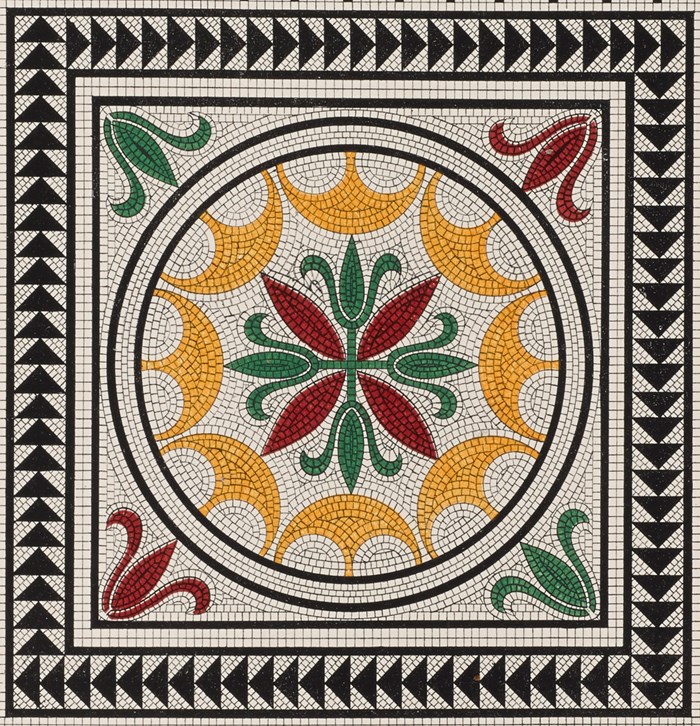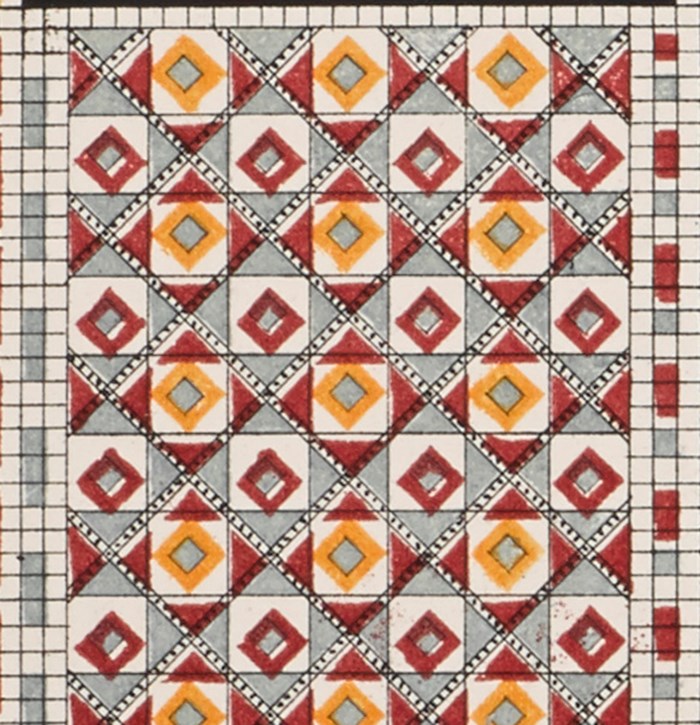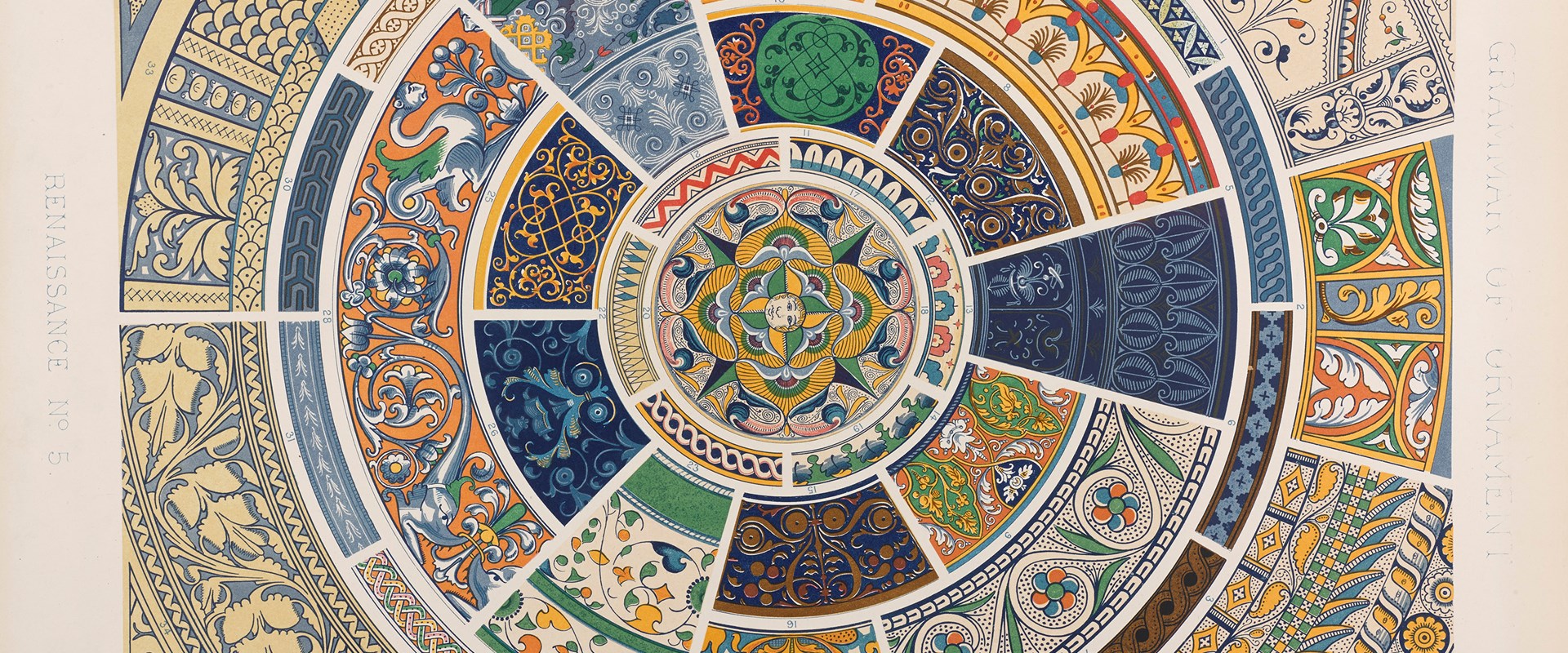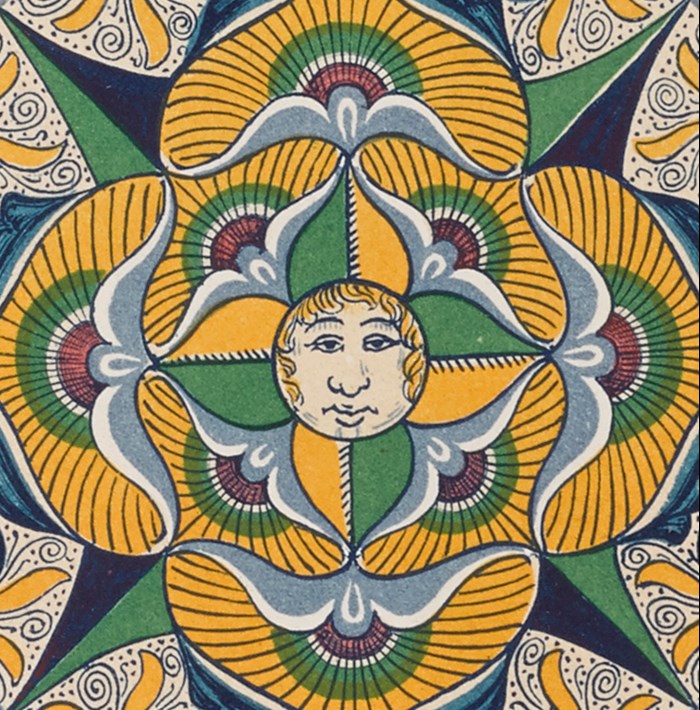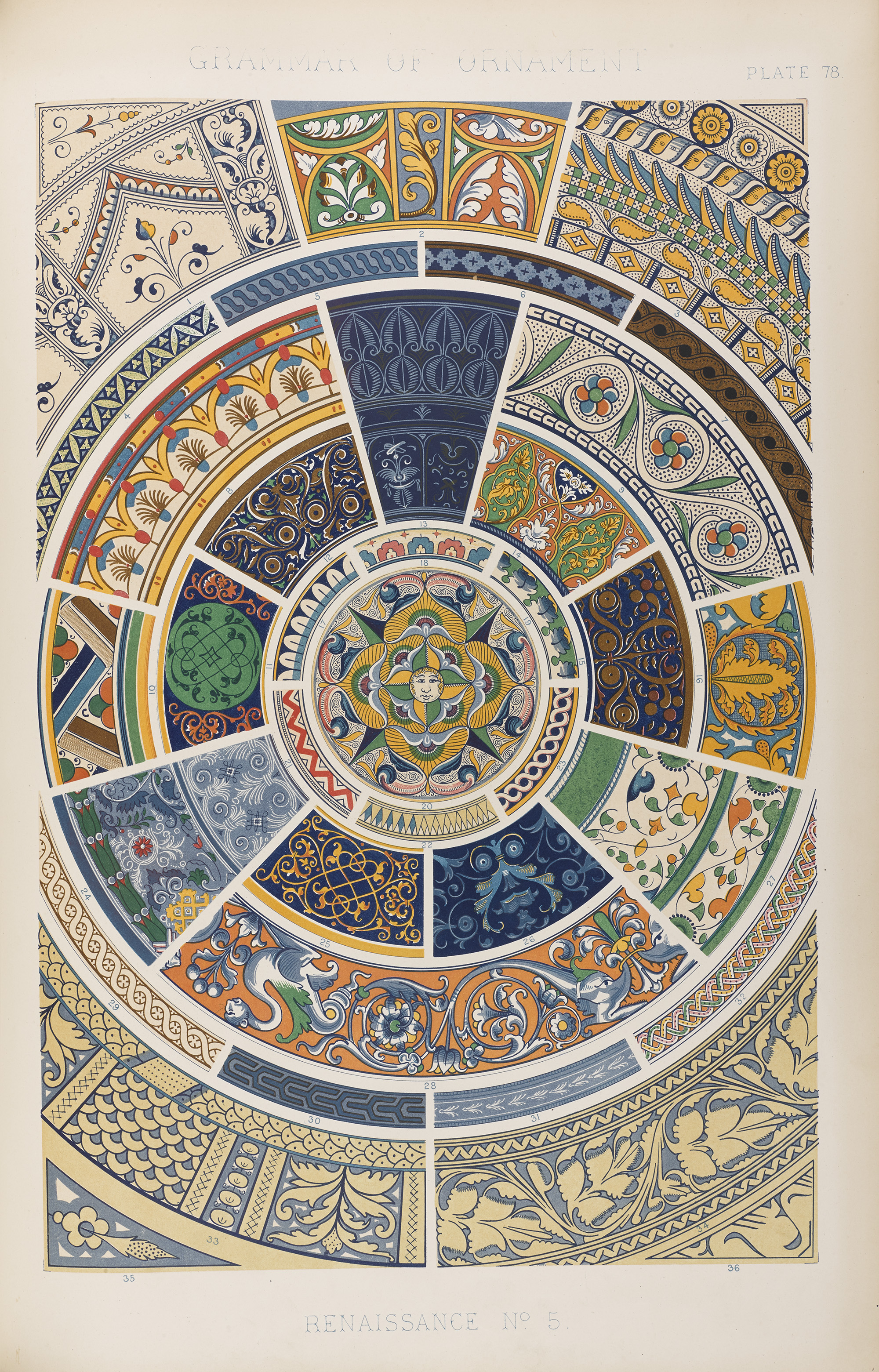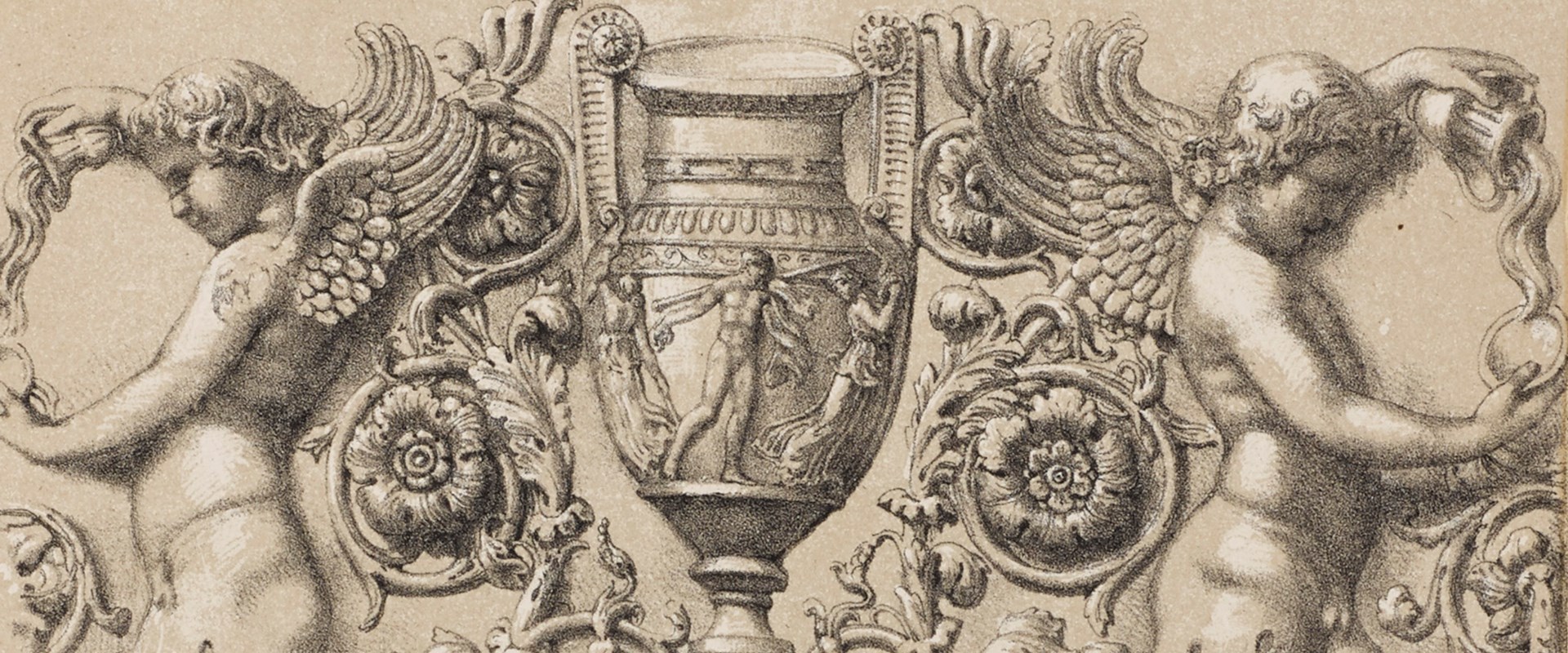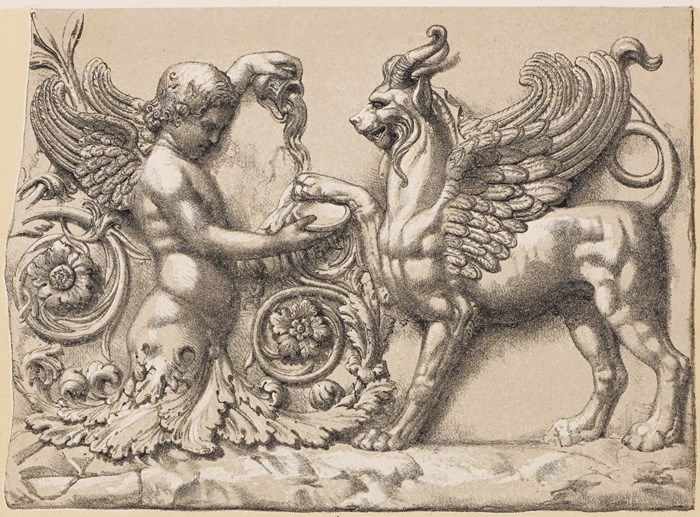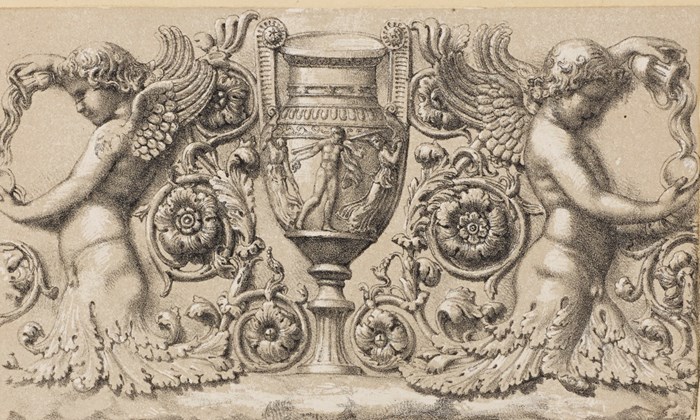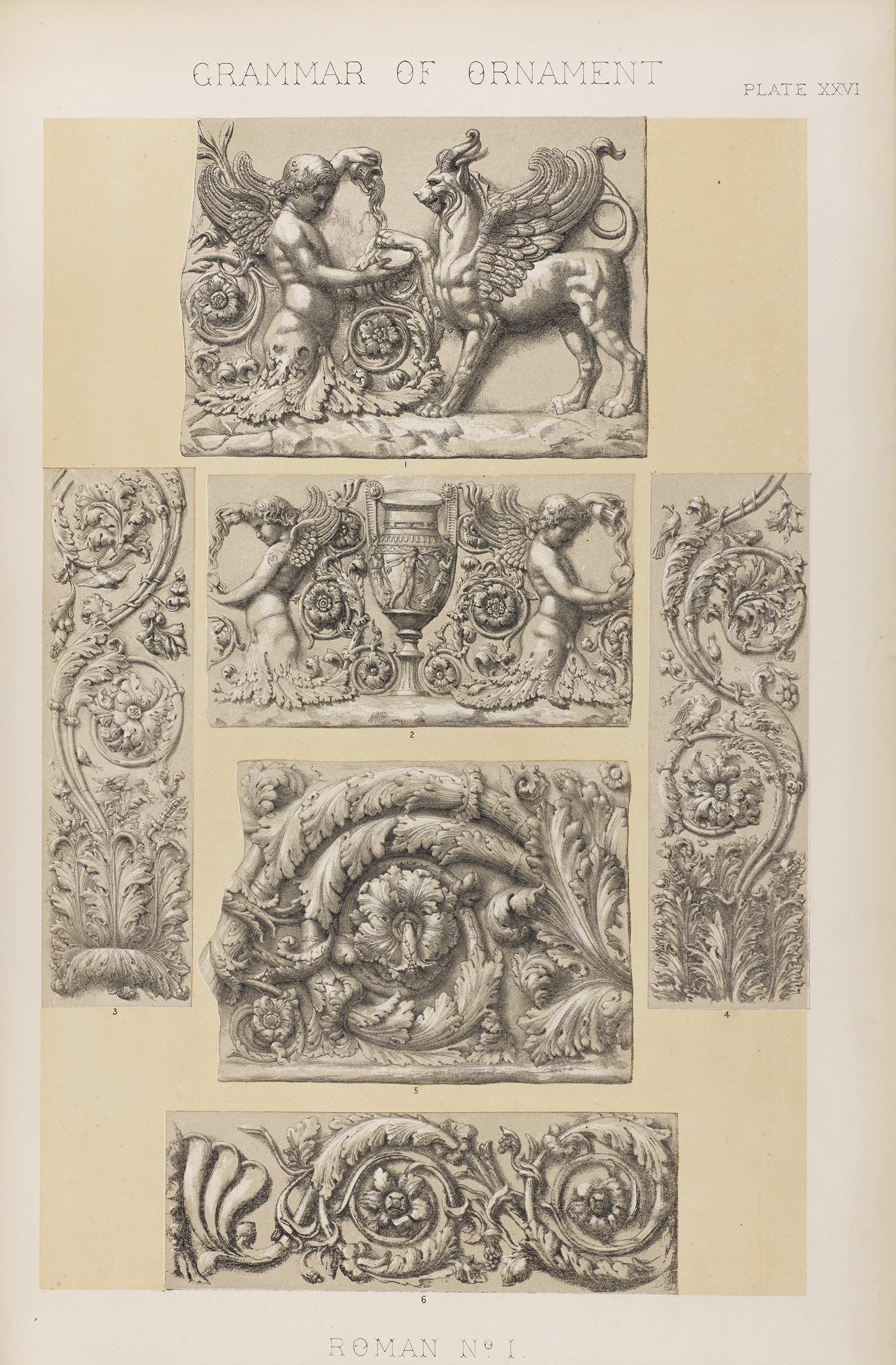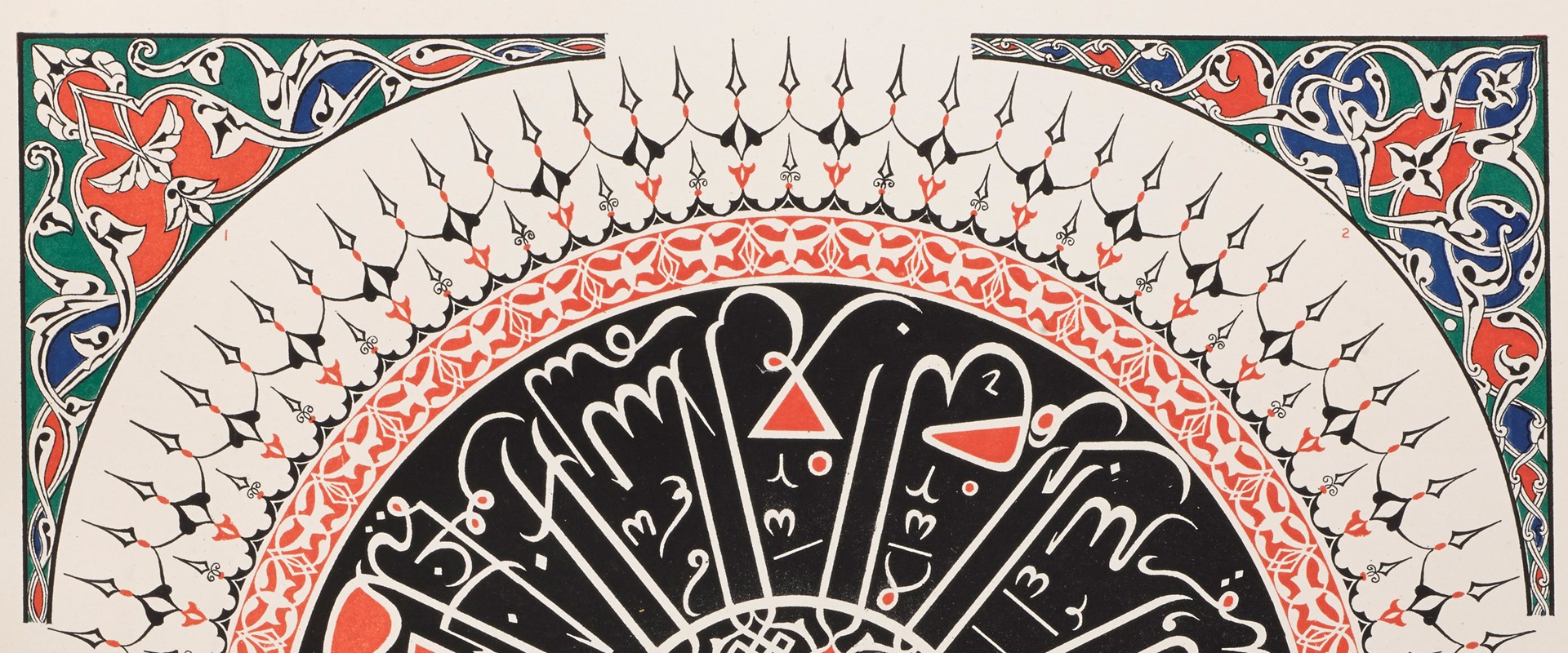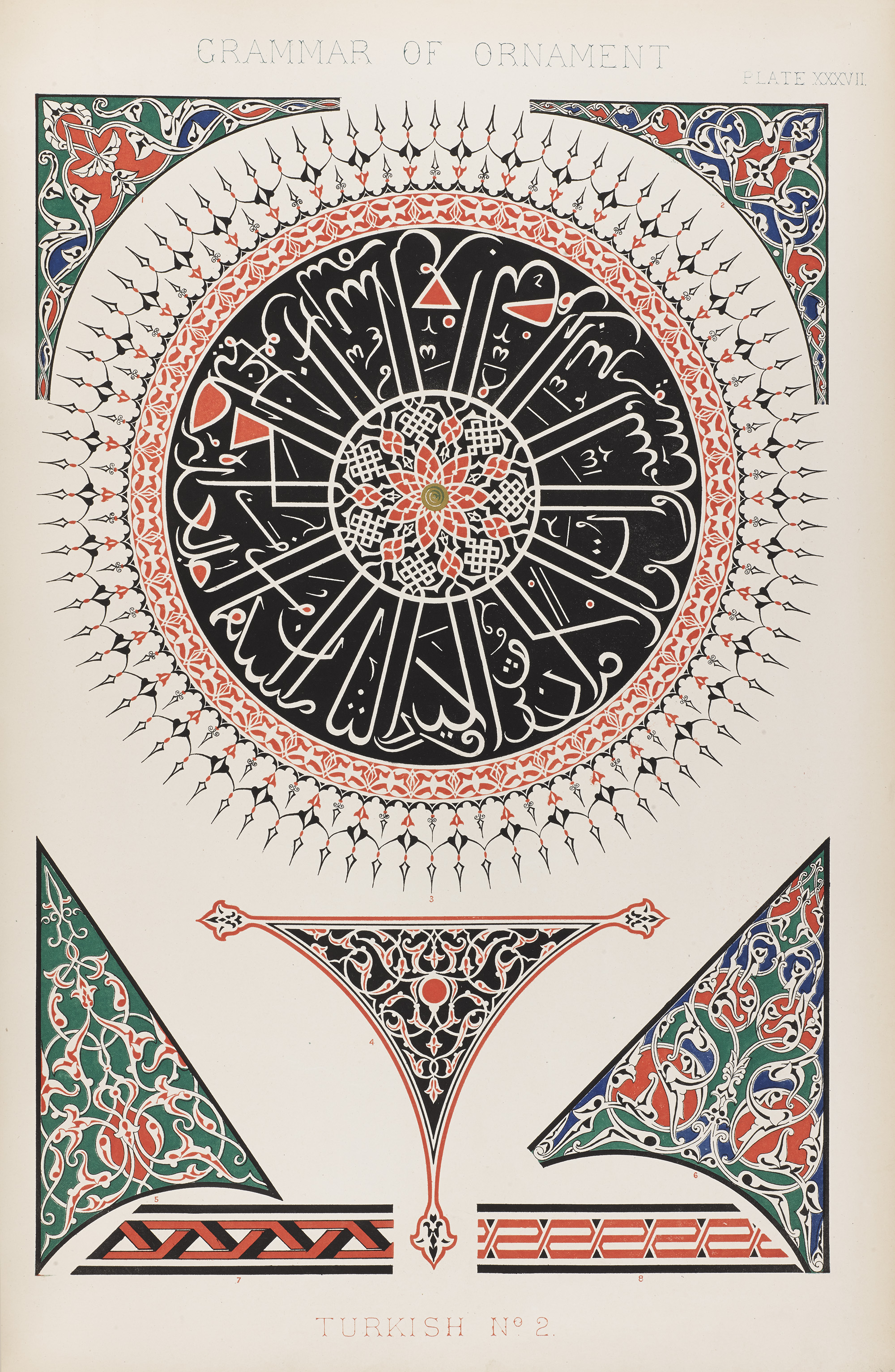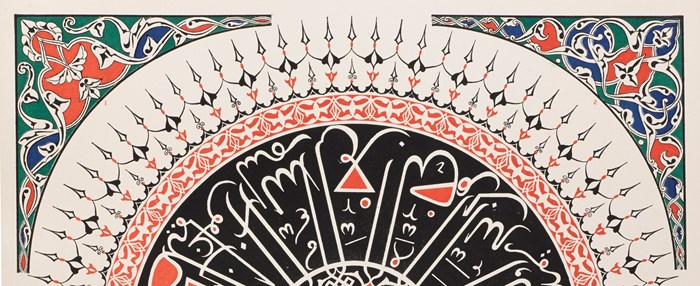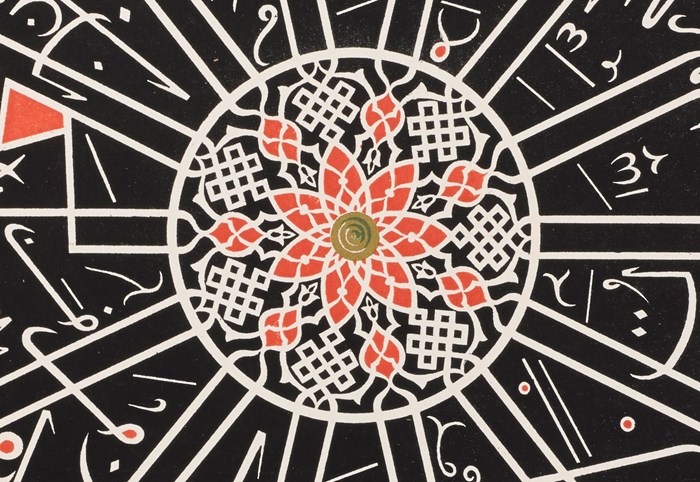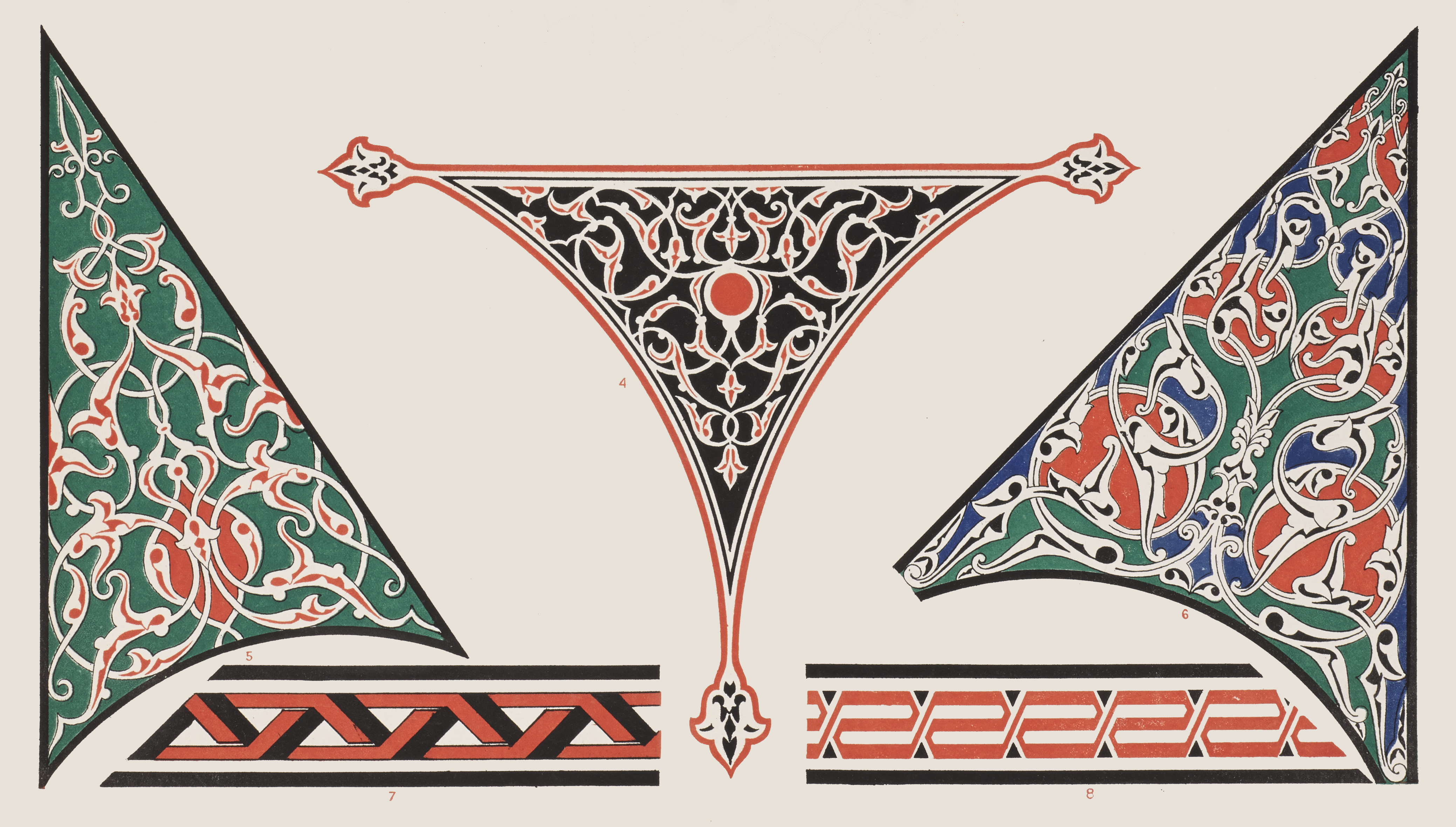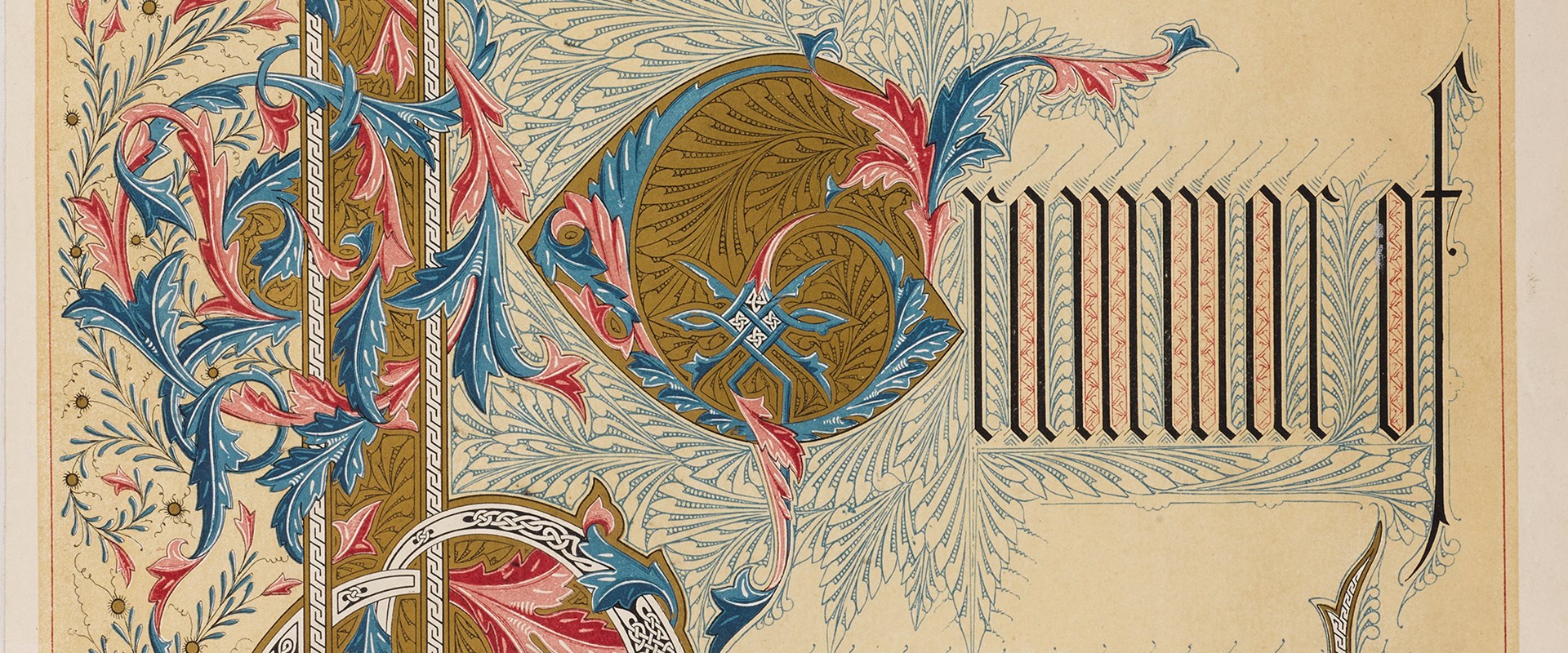Key in a search term below to search our website.
Key in a search term below to search our website.
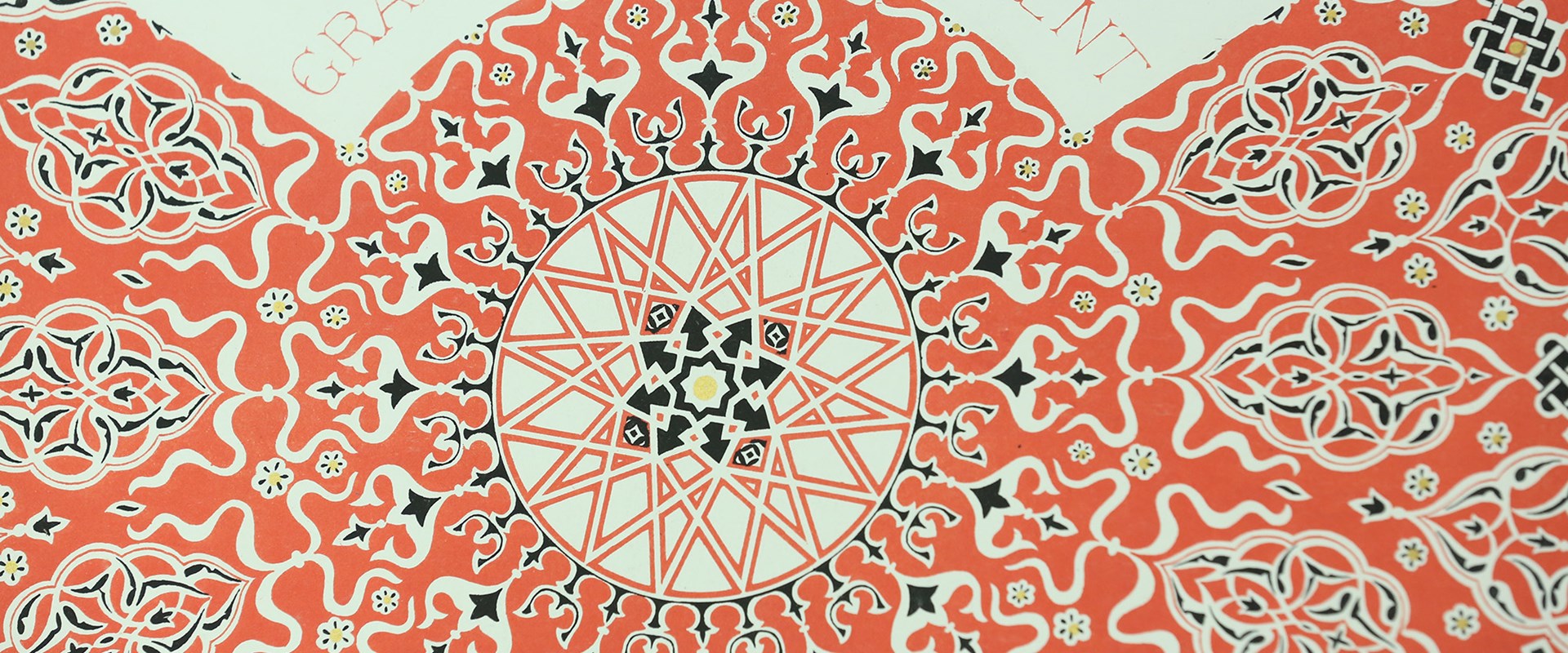
“True beauty results from that repose which the mind feels when the eye, the intellect, and the affections, are satisfied from the absence of any want.- Owen Jones, Grammar of Ornament
Grammar of Ornament was Owen Jones’ design masterpiece. First published in 1856, the lavish folio highlighted stunning patterns, motifs and ornaments in 112 illustrated plates.
Each intricate illustration explored design principles behind the architecture, textiles, manuscripts and decorative arts of 19 diverse cultural periods, with a final chapter revelling in the glory of the natural world.
Grammar of Ornament was a monumental publishing project that achieved standards of colour printing never seen before. It is still in print 150 years later, testament to its enduring design appeal.
Owen Jones was one of the most influential tastemakers of the Victorian era. His pioneering studies on colour theory, geometry and form still inspire designers to this day.
Trained as an architect, designer and design theorist, Jones’ greatest project was perhaps as Superintendent of Works for the 1851 Great Exhibition. A celebration of the power and potential of new industrial technologies and modern design, Jones' work on the interiors of the Crystal Palace showcased his skills to six million visitors. Ironwork decorated in bold primary tones – vivid reds, yellows and blues – nodded to the Alhambra and Ancient Greece, motifs which surfaced in Jones’ work time and time again.
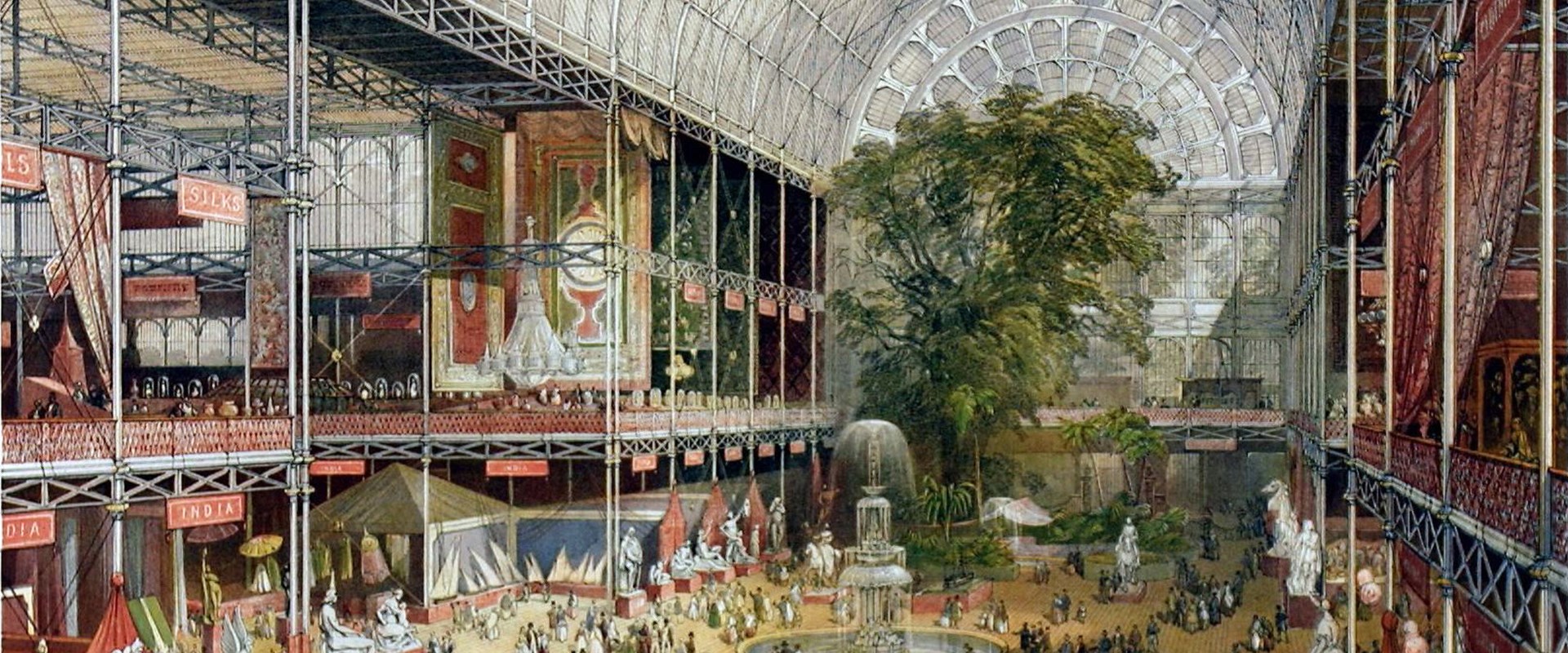
Grammar of Ornament was Owen Jones’ rallying cry to designers and tastemakers of the Victorian era.
His life’s work was to convince others that the foundations for good, modern design were to be found in studying the lessons of history. The Grammar’s purpose was thus not to encourage others to copy or revive these older decorative arts, but to help young designers make use of the rich underlying design principles – the grammar – in their own work.
“The decorative arts arise from, and should properly be attendant upon, architecture.- Owen Jones, Grammar of Ornament
Despite the exponential rise of industrial technologies during the Victorian era, printing presses of the day could in no way mass replicate the intricacy of Jones’ plates.
Instead Jones funded the Grammar’s print run from his own pocket, at great expense. Working with lithographers Day & Son, he turned to the new and expensive technique of chromolithography. This elaborate method of printing required up to 20 separate lithographic stones and drawings, one for each colour. These were then printed one over the other, layer over layer, to form the finished plate. For Grammar of Ornament, Jones’ assistants spent a year meticulously copying the original drawings on to lithography stones.
This layered technique was used in many variations on luxurious furnishings and prints during the late 19th century, including this contemporary French panoramic wallpaper.
